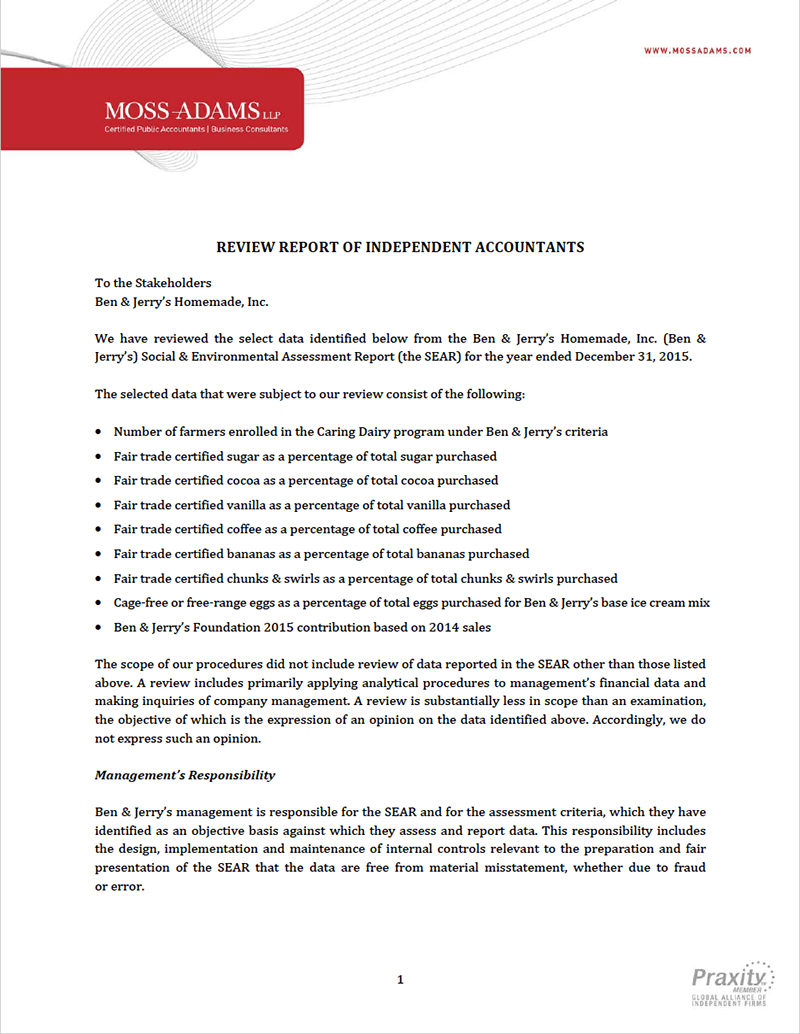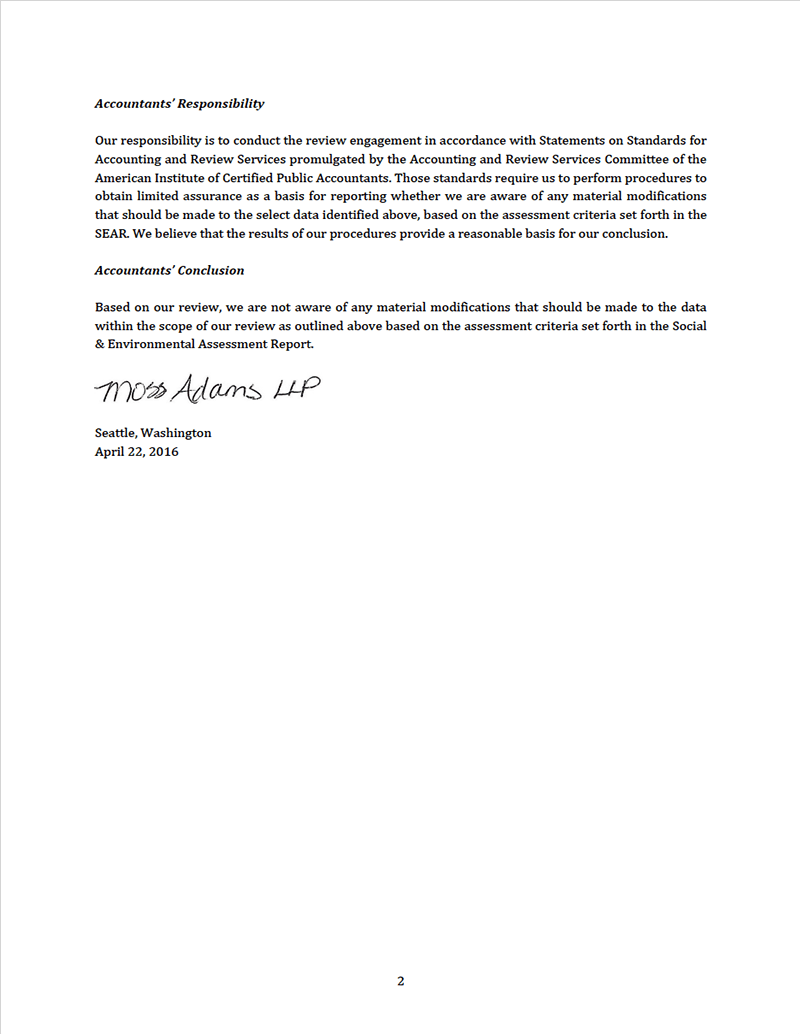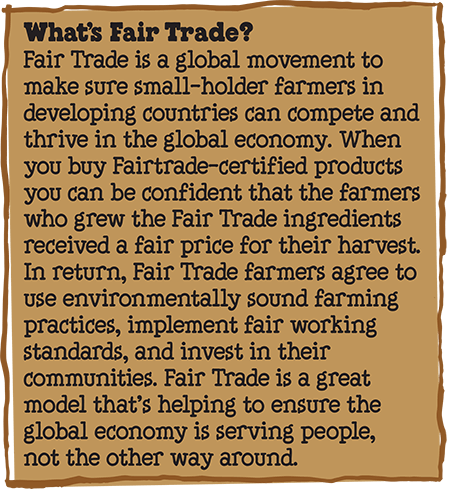2015 Social & Environmental
A LETTER FROM OUR CEO
I am continually amazed by the power of ice cream. It’s difficult to think of anything else so universally loved, synonymous with fun & capable of putting a smile on someone’s face so quickly. At Ben & Jerry’s, we work hard to stay true to our roots as an unconventional (sometimes irreverent) ice cream company – our business is about much more than making ice cream. We speak to the aspiring activist inside everyone, and invite them to join us in building movements that create positive change in the world. To other companies, we seek to demonstrate that operating a values-led business model, based on the concept of linked prosperity – where all stakeholders connected to the business, and their communities, are treated equitably – can be profitable & thrive in today’s marketplace.
We understand that ice cream alone can’t change the world, but the people who share our values & come together around our ice cream can. And over the course of 2015, we continued to make significant strides against issues & advocacy campaigns we have 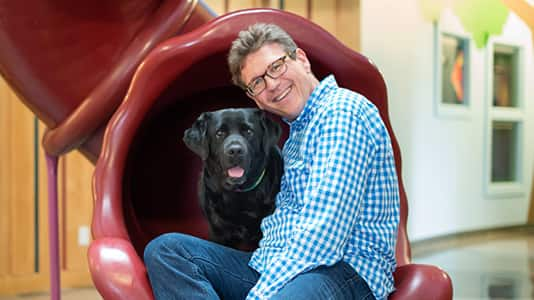 championed and supported for decades, such as: the Supreme Court ruling on Marriage Equality; the defense of the Vermont’s state-level mandatory GMO labelling bill; and the signing of the historic COP21 climate agreement in Paris. While we have long advocated for these outcomes because we believed it was the right thing to do, it would not have been possible to achieve these results without the support and mobilization of our fans & aspiring activists everywhere. They brought their passion & voices to the table – we brought the ice cream.
championed and supported for decades, such as: the Supreme Court ruling on Marriage Equality; the defense of the Vermont’s state-level mandatory GMO labelling bill; and the signing of the historic COP21 climate agreement in Paris. While we have long advocated for these outcomes because we believed it was the right thing to do, it would not have been possible to achieve these results without the support and mobilization of our fans & aspiring activists everywhere. They brought their passion & voices to the table – we brought the ice cream.
But we still have a long way to go before we can claim victory in any of these areas. Today, members of the LGBTQ community still do not enjoy full protection against discrimination in many states, & countries around the world; GMO labeling still faces federal challenges that could strip away the rights of states to enact labeling requirements, and peoples’ right to know what’s in their food; and now that COP21 agreement has been signed, we must continue keep up the pressure & hold countries accountable to the terms of the agreement they signed.
Looking back on our substantial list of accomplishments in 2015, I find it difficult to put into words how proud I am to be part of such an extraordinary organization. Some of the highlights include:
- Save Our Swirled Campaign: We successfully executed our company’s first fully global activism campaign on climate action to demonstrate our support of a strong global climate agreement at the COP 21 in Paris
- Internal Price on Carbon: We implemented an internal price on carbon in 2015, with the revenues to be invested in projects that will reduce our carbon footprint by an ambitious goal of 80% (absolute) by 2050
- Caring Dairy: We completed a comprehensive rewrite of the global Caring Dairy program, establishing some of the highest standards in dairy the industry
- Social Equity: We initiated an internal program to better understand how we can make our company & culture more diverse, inclusive and equitable for everyone
While we continued to make progress toward our social mission objectives, a few areas where we to further focus our efforts include:
- Franchisee Network: Going forward, we need to do more to better inform and engage members of our franchise network on social mission activism, activities & campaigns
- Climate Change: We are in the process of leveraging the results of our Life Cycle Assessment (LCA) studies to expand the scope of the carbon we track & measure beyond our manufacturing emissions, and will be targeting additional areas all throughout our value chain to reduce the overall carbon footprint of our business.
There’s an African proverb that says: If you want to go fast, go alone. If you want to go far, go together. We are trying to tackle some of the most challenging issues facing the world today, and we are fully aware that we cannot do this overnight, in a week, or even in a year – and we sure cannot do it alone. It’s going to take time, and it is only going to be possible if millions of people continue to come together and mobilize to demand positive change in the world.
So I welcome you to you to read our 2015 Social & Environmental Assessment Report (SEAR), and I invite you to join us on a journey to make the world a more open, just & equitable place.
Thank You,
Jostein Solheim
CEO
Highlights in 2015
2015 was an incredible year at Ben & Jerry’s. On the lighter side of life, we launched some exciting new flavors; we were supported by lots of enthusiastic fans (thank you!); and we had a lot of fun, too (we got to scoop ice cream out of a Tesla!). While we did have a lot of fun in 2015, we also did a lot of serious work behind the scenes to meet the high standards we expect of ourselves and that we know our fans expect of us – not only as a sometimes irascible ice cream company, but also as a champion of social, economic & environmental justice.
From a Social Mission point of view, we pushed out our own boundaries in 2015. Our progress is detailed in this report, but some of our key highlights include:
- Implementing an internal price on carbon in 2015, and initiating investments in projects that will reduce our carbon footprint with an ambitious goal of 80% (absolute) by 2050
- Completing our first fully global activism campaign on climate action in support of a strong global climate agreement in Paris at the COP 21
- Completing a comprehensive rewrite of the Caring Dairy program to elevate all standards to the highest global standards in dairy
- Confronting the challenges of operationalizing a worker-led initiative within our dairy supply chain, which is still in early stages of development
- Starting our own internal journey to better understand how our company culture can be more diverse, inclusive and equitable for everyone at Ben & Jerry’s
- Completing our global Fairtrade and non-GMO by source conversions, with our Canadian business finally manufacturing & distributing Fairtrade-certified products in 2015
- Taking our Fairtrade engagement to the next level by implementing programs designed to improve small-holder agricultural producers’ livelihoods through our Producer Development Initiative (PDI) program
While we are extremely proud of these many accomplishments, and believe we are aggressively moving in the right direction, the truth is we actually missed our annual 2015 social mission growth target. So how exactly did we arrive at this conclusion? The answer is as simple as it is unconventional (just like us!). As a company, we strive to grow our annual social mission performance score. Each year, based on our annual priorities and an internal scoring mechanism, we have a year-end goal for our social mission metrics. Even though our social metrics grew in 2015, they didn’t grow at a rate in line with our expectations.
That being said, as our business continues to grow, we are very cognizant of the fact we need to work even harder to ensure that our business is having a positive impact on the livelihoods of our stakeholders & the planet – and demonstrate that we are committed to the concept of linked prosperity. Therefore, we are currently in the process of redeveloping the table indicators we use to measure & evaluate our annual social mission performance, and we will implement a new Quality of Results (QoR) scorecard in 2016. Ultimately, our goal is to move away from the existing practice of measuring performance based on inputs (i.e. – what percentage of cocoa powder was purchased as fair trade?), and instead begin measuring performance based on impacts (i.e. – what good did our fair trade cocoa purchase do?).
Measuring What Matters: Fine Tuning Our Metrics
Ben & Jerry’s has been issuing public reports on our social and environmental activities since our 1988 annual report. 2015 is the sixth year we are using our QoR framework to measure our performance in key areas.
The primary purpose of the QoR is to give Ben & Jerry’s management, Ben & Jerry’s Board of Directors, Unilever management and you a clear scorecard by which to evaluate the Company’s social and environmental performance.
The QoR measures specific goals for our social and environmental performance within 14 priorities of our business. (Details of which can be found in our full report.) We made some gains in 2015 over 2014 for our overall QoR numbers. We’re proud of that progress, even though it failed to grow at a rate in line with our expectations.

For our 2015 report, we engaged Moss Adams LLP, an independent accounting firm, to review specific QoR indicators that Ben & Jerry’s set as priorities for the year. The scope of Moss Adams’ review primarily focuses on our Caring Dairy™ program, our Fairtrade conversion, and our non-GMO ingredient sourcing. You can read Moss Adams’ review here.
We look forward to giving you periodic updates on our progress!
Major Areas of Focus in 2015
Our Three-Part Mission Statement is at Our Core.
Ben & Jerry’s operates on a three-part mission that aims to create prosperity for everyone  that’s connected to our business: suppliers, employees, farmers, franchisees, customers, and neighbors alike.
that’s connected to our business: suppliers, employees, farmers, franchisees, customers, and neighbors alike.
You can read the whole Ben & Jerry’s Mission Statement at www.benjerry.com/values.
A Sustainable Model of Linked Prosperity
Our linked prosperity model is cast inside our Mission Statement, which was written in 1988. Numerous academics and progressive business visionaries have advocated for similar models in recent years, which is a good affirmation, but we’ve been working on strengthening the model ever since. And that’s the point -- we’re still working on it. We always will be. We totally understand that you never really get there. The work is never done.
What we envision with our linked prosperity model is that as the company prospers, all those touched by the company must also prosper, including employees, suppliers, 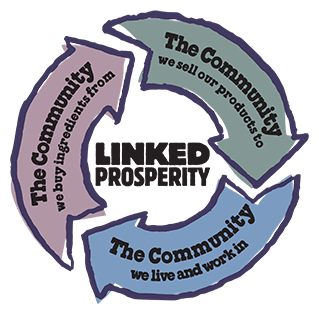 customers, and communities. A simple idea, but it takes a lot of work by a lot of people to make it happen.
customers, and communities. A simple idea, but it takes a lot of work by a lot of people to make it happen.
Some of the more well-known, long-standing examples of linked prosperity include:
- Our livable wage policy.
- Our ongoing support for family dairy farms.
- Our commitment to supporting small-holder agricultural producers by purchasing Fairtrade-certified ingredients.
- Our investment in values-led sourcing partnerships such as with the Greyston Bakery in Yonkers, NY, where they hire people with barriers to employment and empower them with skills training, a renewed sense of dignity and a paycheck at the end of the week.
 When we zoom out in our considerations of linked prosperity, we could wax philosophical giving consideration to the pantheistic philosophy that all things in the universe are linked and therefore what we contribute to the individual benefit flows to the collective benefit, truly benefitting all; so linked prosperity must create benefits to the individual, the community, the planet; it’s all linked. Throughout 2015, as in each and every year we’ve been in business, we continued to explore what a sustainable corporate concept of linked prosperity means today, in all its forms.
When we zoom out in our considerations of linked prosperity, we could wax philosophical giving consideration to the pantheistic philosophy that all things in the universe are linked and therefore what we contribute to the individual benefit flows to the collective benefit, truly benefitting all; so linked prosperity must create benefits to the individual, the community, the planet; it’s all linked. Throughout 2015, as in each and every year we’ve been in business, we continued to explore what a sustainable corporate concept of linked prosperity means today, in all its forms.
Values Led Sourcing
Caring Dairy™
We’ve been working with dairy farmers in Vermont and the Netherlands for many years to help them push towards the leading edge of sustainable dairy practices. Now in its fifth year globally, our Caring Dairy™ program offers our farmer partners a practical framework for understanding, evaluating, and improving the sustainability of their dairy operations.
The Caring Dairy™ Program is based upon an easy-to-use web-based self-assessment tool, which enables farmers to evaluate their farm against acomprehensive set of economic, social and environmental criteria – or “sustainability 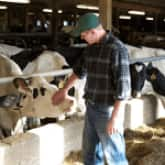 indicators” – for farming.
indicators” – for farming.
In 2015, we introduced a tiered system through which farmers can move as they improve standards and meet best practices for people, animals and the planet. Premiums to farmers increase as farms ascend from bronze, silver and gold standards. Starting in 2016, farms at all three tiers of the program will fall under the scope of a 3rd party review to ensure that standards are being met.
Learn more about Caring Dairy™.
Fair Trade
Although it took us about a year longer than we had anticipated, with our Canadian products transitioning as of January 1, 2015, all of our products around the globe (with the exception of our ice cream novelty bars, which we no longer manufacture as of 2016) were fully Fairtrade certified.
Our products have earned the Fairtrade seal because they meet, and in many cases actually exceed, the Fairtrade Certification requirements established 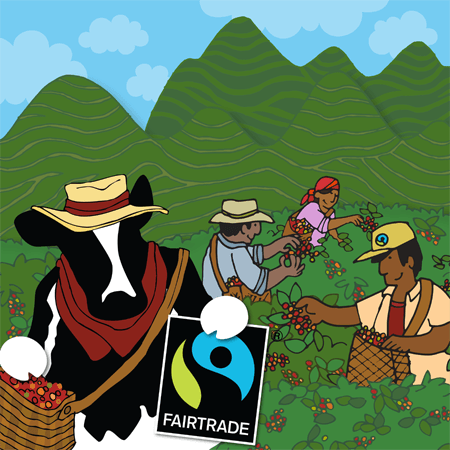 by Fairtrade International. But to be clear, while our products are Fairtrade certified, it does not mean that every ingredient we use is Fairtrade certified. While our five key commodities (cocoa, vanilla, banana, sugar & coffee), which make up the bulk of our product, are traded in compliance with Fairtrade standards, there are still a few ingredients, such as certain spices, nuts and fruits, that we are unable to source from Fairtrade farms either because they are not available or don’t meet our specifications. In these cases, Fairtrade International granted us derogations (approved waivers), on a case-by-case basis, acknowledging legitimate constraints exist in our ability to secure these components through Fairtrade channels.
by Fairtrade International. But to be clear, while our products are Fairtrade certified, it does not mean that every ingredient we use is Fairtrade certified. While our five key commodities (cocoa, vanilla, banana, sugar & coffee), which make up the bulk of our product, are traded in compliance with Fairtrade standards, there are still a few ingredients, such as certain spices, nuts and fruits, that we are unable to source from Fairtrade farms either because they are not available or don’t meet our specifications. In these cases, Fairtrade International granted us derogations (approved waivers), on a case-by-case basis, acknowledging legitimate constraints exist in our ability to secure these components through Fairtrade channels.
Therefore, in order to secure reliable sources of Fairtrade ingredients we cannot currently access, and to help Fairtrade producers realize sustainable livelihoods, we created the Producer Development Initiative (PDI) with our partner, Fairtrade International.
On an annual basis, Ben & Jerry’s & Fairtrade International work out a monetary value of what the total Fairtrade Social Premium that Producer Organizations would have received, if the volume of derogated ingredients had been available, and purchased, via Fairtrade channels. Ben & Jerry’s then contributes an amount equal to this social premium value to fund Fairtrade Producer Development Initiative (PDI) projects – More on this in our Values-Led Sourcing section, or explore more about our commitment to Fairtrade and our work with the Producer Development Initiative.
Non-GMO - Consumers Right to Know
Genetically modified organisms, or GMOs, are organisms that have had their genetic makeup (DNA) altered through 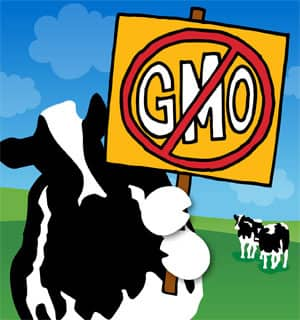 genetic engineering in a way that does not occur in nature or through traditional breeding methods. While all of the ingredients we buy are non-GMO by seed source (again, except for our ice cream bars), as much as 80% of the conventionally processed food products on grocery store shelves in the U.S. contain one or more genetically engineered ingredients. We think consumers have the right to know what’s in their food and in 2015 we kept up our fight to support mandatory GMO labeling laws, and saw some big wins.
genetic engineering in a way that does not occur in nature or through traditional breeding methods. While all of the ingredients we buy are non-GMO by seed source (again, except for our ice cream bars), as much as 80% of the conventionally processed food products on grocery store shelves in the U.S. contain one or more genetically engineered ingredients. We think consumers have the right to know what’s in their food and in 2015 we kept up our fight to support mandatory GMO labeling laws, and saw some big wins.
Learn more about our conversion to non-GMO sourcing and our position on GMO labeling.
Social and Economic Justice
Join Our Core
In partnership with our friends at Ashoka we sponsored the 4th annual, Join Our Core competition in Europe, with additional programs in Japan and Singapore, to find and help support the best young social entrepreneurs in our growing global communities. The competition is the perfect way for Ben & Jerry’s to support social entrepreneurs that share our value of linked prosperity.
This year, candidates in our European program were required to commit to running a crowdfunding campaign to raise at least $30,000. Ben & Jerry’s supported the winning causes, by contributing up to 20% of the campaigns’ goals, providing business mentoring and promoting the winning campaigns.
Climate Justice
Global Warming
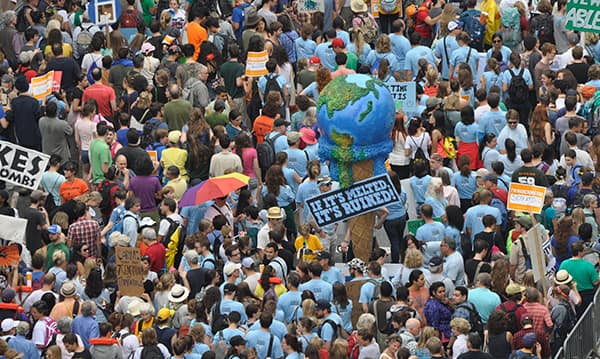 At Ben & Jerry’s we are investing in making our operations and supply chain more efficient and reducing our carbon footprint, but we know we are just one small company. In 2015, we defined a comprehensive climate justice strategy, which includes a self-imposed price on carbon. These revenues will be invested in projects and innovative technologies
At Ben & Jerry’s we are investing in making our operations and supply chain more efficient and reducing our carbon footprint, but we know we are just one small company. In 2015, we defined a comprehensive climate justice strategy, which includes a self-imposed price on carbon. These revenues will be invested in projects and innovative technologies 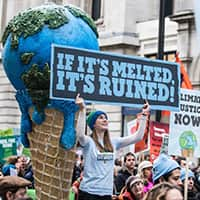 to help us achieve our ambitious long-term goal of reducing the absolute carbon footprint of our business by 80% by 2050, in line with globally established targets.
to help us achieve our ambitious long-term goal of reducing the absolute carbon footprint of our business by 80% by 2050, in line with globally established targets.
On the climate activism & engagement front, in 2015 we mounted the largest coordinated action campaign in Ben & Jerry’s history. Our employees and fans around the globe, came together in Ottawa, Melbourne, Sydney, Tokyo, São Paulo, Athens, Berlin, Amsterdam, Copenhagen, Auckland, and Zurich to participate in the Global Climate March on November 29th. We joined more than 750,000 people in more than 150 countries around the world who took to the streets on the eve of COP 21 to demand action from their leaders.
Learn more about our commitment to addressing climate change.
Our Company
How We Work
Ben & Jerry’s has been making ice cream since 1978 when grade school buddies Ben Cohen and Jerry Greenfield opened their first scoop shop in Burlington, Vermont. Though we’ve never strayed from the boys’ original dream — to create unique and euphoric ice cream flavors while making a positive impact along the way — we have grown and changed in all sorts of ways.
Ben & Jerry’s is owned by Unilever, which acquired the company in the year 2000. As of 2015, our packaged ice cream and novelties, such as ice cream bars and sandwiches, are sold in 35 countries, primarily through packaged products in retail outlets. Ben & Jerry’s also sold products, in 2015, through scoop shops operating in 21 countries. Our products are produced in pints, quarts, 500 ml cups, 2.4 gallon, 9.08 liter and 4.5 liter tubs, single-serve cups and individual novelties; and these are distributed in supermarkets, grocery stores, convenience stores, scoop shops, restaurants and other venues. By the end of 2015, Ben & Jerry’s products were marketed and distributed throughout the world by affiliated companies within Unilever, and a third-party licensee in Israel.
Governance
Based on a unique acquisition agreement, Ben & Jerry’s and Unilever set up a governance structure that was unprecedented at the time and served to keep Ben & Jerry’s thriving as a values-led company.
Ben & Jerry’s Board of Directors
 Our Chief Executive Officer, Jostein Solheim, receives direction, counsel and support from an independent Ben & Jerry’s Board of Directors (the Board), established at the time of the Unilever acquisition. The Board is responsible for Ben & Jerry’s Social Mission and the Essential Integrity of Ben & Jerry’s, which includes, among other things, product quality and standards. In this role, the Board advises and supports Ben & Jerry’s senior management in maintaining and strengthening the Company’s three-part Mission Statement and protecting Ben & Jerry’s brand equity. This Board meets in full on a quarterly basis, and conducts ongoing committee work throughout the year.
Our Chief Executive Officer, Jostein Solheim, receives direction, counsel and support from an independent Ben & Jerry’s Board of Directors (the Board), established at the time of the Unilever acquisition. The Board is responsible for Ben & Jerry’s Social Mission and the Essential Integrity of Ben & Jerry’s, which includes, among other things, product quality and standards. In this role, the Board advises and supports Ben & Jerry’s senior management in maintaining and strengthening the Company’s three-part Mission Statement and protecting Ben & Jerry’s brand equity. This Board meets in full on a quarterly basis, and conducts ongoing committee work throughout the year.
In 2015, the Ben & Jerry’s independent Board of Directors continued its work focusing the Company on its over-arching business vision of a sustainable model of linked prosperity for all of Ben & Jerry’s stakeholders, from seed to freezer. As the business continues to grow globally, the Board remains focused on making sure the Company’s three-part mission remains intact and at the core of what we do.
Additionally, the Board continued to play a significant role in championing our commitment to Fairtrade and non-GMO sourced ingredients and our stand on mandatory GMO labeling. In addition, the Board has been leading management and the entire Ben & Jerry’s organization to examine the issues of race, class and gender equity within Ben & Jerry’s and throughout its business.
The Ben & Jerry’s Board is made up of global leaders in social, economic and environmental advocacy and activism. Our Board is growing more diverse and has been proactive in recruiting new members with the experience and expertise they will need to address the complex issues we will face in years to come.
In terms of the basics, Ben & Jerry’s global business is managed out of our Central Support offices in South Burlington, Vermont. Ben & Jerry’s sits within Unilever’s Refreshments division, which is managed globally out of London and regionally from Unilever offices in Englewood Cliffs, New Jersey.
Our Mission
Ben & Jerry’s is founded on and dedicated to a sustainable corporate concept of linked prosperity. Our mission consists of three interrelated parts:

![]() Product Mission To make, distribute and sell the finest quality ice cream and euphoric concoctions with a continued commitment to incorporating wholesome, natural ingredients and promoting business practices that respect the Earth and the Environment.
Product Mission To make, distribute and sell the finest quality ice cream and euphoric concoctions with a continued commitment to incorporating wholesome, natural ingredients and promoting business practices that respect the Earth and the Environment.
![]() Economic Mission To operate the Company on a sustainable financial basis of profitable growth, increasing value for our stakeholders and expanding opportunities for development and career growth for our employees.
Economic Mission To operate the Company on a sustainable financial basis of profitable growth, increasing value for our stakeholders and expanding opportunities for development and career growth for our employees.
![]() Social Mission To operate the company in a way that actively recognizes the central role that business plays in society by initiating innovative ways to improve the quality of life locally, nationally and internationally.
Social Mission To operate the company in a way that actively recognizes the central role that business plays in society by initiating innovative ways to improve the quality of life locally, nationally and internationally.
Underlying the mission is the determination to seek new and creative ways of addressing all three parts, while holding a deep respect for individuals inside and outside the company and for the communities of which they are a part.
Leading with Progressive Values Across Our Business
We have a progressive, nonpartisan Social Mission that seeks to meet human needs and eliminate injustices in our local, national, and international communities by integrating these concerns into our day-to-day business activities.
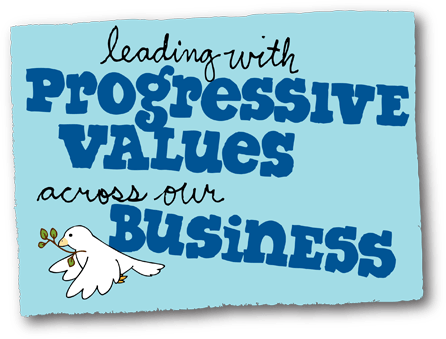
Our focus is on children and families, the environment and sustainable agriculture on family farms.
Capitalism and the wealth it produces do not create opportunity for everyone equally. We recognize that the gap between the rich and the poor is wider than at any time since the 1920s. We strive to create economic opportunities for those who have been denied them and to advance new models of economic justice that are sustainable and replicable.
By definition, the manufacturing of products creates waste. We strive to minimize our negative impact on the environment.
The growing of food is overly reliant on the use of toxic chemicals and other methods that are unsustainable. We support sustainable and safe methods of food production that reduce environmental degradation, maintain the productivity of the land over time, and support the economic viability of family farms and rural communities.
We seek and support nonviolent ways to achieve peace and justice. We believe government resources are more productively used in meeting human needs than in building and maintaining weapons systems.
We strive to show a deep respect for human beings inside and outside our company and for the communities in which they live.
Operations
Ben & Jerry’s ice cream for the North American market is made in our manufacturing plants in Waterbury and St. Albans, Vermont and in a Unilever facility in Henderson, Nevada. We also make ice cream for the Canadian market in a Unilever facility in Simcoe, Ontario. Our U.S. frozen novelties, such as ice cream bars, were manufactured at a Unilever facility in Sikeston, Missouri. In 2015, Ben & Jerry’s ice cream for the European market, was made at Unilever facilities in Hellendoorn, the Netherlands. Products for Asia and Australia were exported from our facilities in the U.S. and the Netherlands.
Code of Business Principles
All of the suppliers for Ben & Jerry’s ice cream are expected to follow practices consistent with the Code of Business Principles of our parent company, Unilever. This code includes: continuous improvement in managing environmental impacts, safe and healthy standards for workers, and a firm commitment to human rights, among other things. Unilever is also a signatory to the U.N. Secretary General’s Global Compact of 1999, which commits the company to support and respect human rights within our sphere of influence.
Values-Led Sourcing (VLS)
Overview
Under the broadest lens, we work to make all of our sourcing decisions value-led decisions. From our sustainable dairy program, Caring Dairy™, to our Fairtrade-certified ingredients and non-GMO sourcing, to ingredients made for us by social enterprises, all of these decisions are based in our values.
We’d like to increase our partnerships with Values Led Suppliers and establish more relationships with smallholder producers. The goal is to use our purchasing power to create economic opportunities for those who have not had access to them. In 2015, our work with the Producers Development Initiative, helped move us forward on this goal.
Producer Development Initiative (PDI)
In 2012, we began the process of mapping our whole value chain and began to formulate a strategy for bringing our linked-prosperity business model to everyone that helps make our ice cream. After more than two years of planning, in 2015, with our Producer Development Initiative (PDI) partners, we began working to build linked prosperity relationships within our existing supply chain - starting with supporting farming communities around the globe.
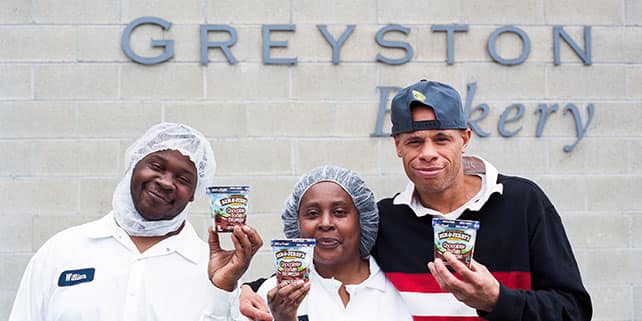 The goals of the PDI are to help smallholder producers become better business partners, to achieve a sustainable living income and to address the negative impacts of climate change. The PDI will achieve these objectives by innovating and investing in projects that help smallholder producers build capacity and resiliency, improve quality and gain expanded market access for their products, so that they can experience more success in global markets and supply chains. Where possible, projects will also be designed to support the longer-term sustainability of producer enterprises through:
The goals of the PDI are to help smallholder producers become better business partners, to achieve a sustainable living income and to address the negative impacts of climate change. The PDI will achieve these objectives by innovating and investing in projects that help smallholder producers build capacity and resiliency, improve quality and gain expanded market access for their products, so that they can experience more success in global markets and supply chains. Where possible, projects will also be designed to support the longer-term sustainability of producer enterprises through:
- Climate change adaptation and mitigation
- Improving producer organizational infrastructure
- Improving access to short and long-term financing
- Crop and income diversification
- Developing value-added processing capacity at origin
- Achieving Fairtrade certification
 To achieve the greatest impact, the PDI will implement projects that focus on producer groups growing and marketing Fairtrade certified agricultural products that are used, or could be used, in Ben & Jerry’s supply chain. We want to focus our resources within the supply chain where we source the highest volume of Fairtrade-certified ingredients. The most significant ingredients, the ones that make up the bulk of our Fairtrade sourcing, include: sugar, cocoa, coffee and vanilla.
To achieve the greatest impact, the PDI will implement projects that focus on producer groups growing and marketing Fairtrade certified agricultural products that are used, or could be used, in Ben & Jerry’s supply chain. We want to focus our resources within the supply chain where we source the highest volume of Fairtrade-certified ingredients. The most significant ingredients, the ones that make up the bulk of our Fairtrade sourcing, include: sugar, cocoa, coffee and vanilla.
Through our work with the PDI, we are inviting all of our suppliers into the values-led sourcing network. We know not everyone will jump on board and we know some may take baby steps, but we believe this incremental change – and shift away from business as usual – will lead to systemic and enduring change. We recognize we are in the early stages of this complex and ambitious process, but we are committed to working with partners, farmers, producers and stakeholders to transform our supply chain, and advance our model of linked-prosperity.Learn more about our partnership with PUR Projet.
Learn more about the PDI and Fairtrade in the U.S. and around the world.
Supporting Social Entrepreneurs
There is a special category of Values-Led Sourcing (VLS) suppliers: social enterprises that work to create change in communities and to provide opportunities to those traditionally denied them. Often, when referring to a VLS supplier, people think about this category. And that’s what this section of the SEAR is focusing on. In order to make great ice cream and create positive social change, Ben & Jerry’s continues to search for ingredient suppliers all along the supply chain who are aligned with our Company’s mission and core values. These are suppliers who,  through their business practices or through their products, are expanding economic opportunities for those not afforded them, or leading the way to more sustainable environmental or agricultural systems.
through their business practices or through their products, are expanding economic opportunities for those not afforded them, or leading the way to more sustainable environmental or agricultural systems.
In 2012 we started the process of better defining what it means to be a Ben & Jerry’s VLS supplier. Late in 2013 it dawned on us that our friends at B Lab had developed a comprehensive measurement tool that aligned nicely with our own values and criteria called the B Impact Assessment. We figured there is no sense in reinventing the wheel, so in 2014 we piloted using the B Impact Assessment tool with a handful of key suppliers. This new tool gave us a great benchmarking framework and helps us understand where our suppliers stand, in comparison to other companies.
Overall, we see how the B Impact Assessment can help us improve our VLS practices and ultimately increase the number of suppliers that we are working with who share our goal to create social, economic and environmental benefits.
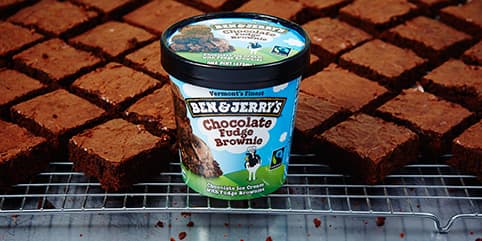 In 2015, considering the B Impact Assessment standards and other socially progressive attributes, we would designate two suppliers, Greyston Bakery and Rhino Foods as a full-fledged VLS partners :
In 2015, considering the B Impact Assessment standards and other socially progressive attributes, we would designate two suppliers, Greyston Bakery and Rhino Foods as a full-fledged VLS partners :
- The Greyston Bakery, in Yonkers, New York, has been supplying us with chocolate brownies for our Chocolate Fudge Brownie flavor for over 26 years. The bakery is owned by the Greyston Foundation, a nonprofit organization with a mission to support people with barriers to employment on the path to self-sufficiency. Greyston’s programs reach over 2,000 people a year through child care, housing, counseling, health care, and other services. Greyston is also a certified Benefit Corporation (B Corp), which means that Greyston satisfied rigorous criteria to earn B Corp status alongside a growing community of companies that include a social purpose alongside their product and economic missions.
- Rhino Foods is another longtime supplier that makes the gobs of cookie dough we use in our Chocolate Chip Cookie Dough ice cream. In 2013, Rhino became a certified B Corp, which is quite an accomplishment! Rhino has, over time, developed a variety of programs that support its employees and the surrounding community. Rhino employs dozens of people who have come to the U.S. as refugees from around the world. Through a unique variety of support programs, Rhino helps these and all of its employees to earn a living, save money, develop a credit history, and make a new life for themselves and their families.
VLS Ingredients
In 2015, we continued to make slow but steady progress toward our commitment of sourcing ingredients from VLS partners. The overall percentage of VLS sourced products increased slightly from 2014 to 2015.
- Globally, about 27.4% of chunks and swirls were purchased from values led suppliers, up from 26% in 2014.
- In North America, 22.1% of the chunks and swirls were purchased from values led suppliers, slightly up from 21.2% in 2014.
- In Europe, 37.9% of chunks and swirls were purchased from values led suppliers, up from 36.5% in 2014.
Caring Dairy
Setting Global Standards for Sustainable Dairy Practices
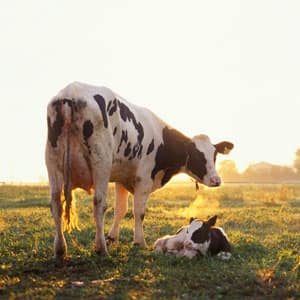 We’ve been working with dairy farmers in Vermont, Utah and the Netherlands for many years to help them push towards the leading edge of sustainable dairy practices. Now fully harmonized over all global regions, our Caring Dairy™ program offers our farmer partners a practical framework for understanding, evaluating, and improving the sustainability of their dairy operations.
We’ve been working with dairy farmers in Vermont, Utah and the Netherlands for many years to help them push towards the leading edge of sustainable dairy practices. Now fully harmonized over all global regions, our Caring Dairy™ program offers our farmer partners a practical framework for understanding, evaluating, and improving the sustainability of their dairy operations.  The Caring Dairy™ program is based upon an easy-to-use web based self-assessment tool, which enables farmers to evaluate their farm against a comprehensive set of economic, social and environmental criteria – or “sustainability indicators” – for farming. Leveraging the results of the self-assessment, we then help each farmer develop a unique action plan to improve his or her practices in the identified areas.
The Caring Dairy™ program is based upon an easy-to-use web based self-assessment tool, which enables farmers to evaluate their farm against a comprehensive set of economic, social and environmental criteria – or “sustainability indicators” – for farming. Leveraging the results of the self-assessment, we then help each farmer develop a unique action plan to improve his or her practices in the identified areas.
In response to the increased demands on farmers globally and a comprehensive evaluation of Caring Dairy program outcomes since 2001, we spent much of 2015 enhancing and strengthen the Caring Dairy program. The new iteration of the program, (Caring Dairy 2.0), rolled out in 2016, calls for increased operating standards for participating farmers, including a commitment to end tail docking, and increased compensation for participating farmers. The new program also puts in place a tiered system through which farmers can move as they improve standards and meet best practices for people, animals and the planet. Premiums increase as farms ascend from basic, silver and gold standards. At all three tiers of the program, farms are validated by a third party for assurance that standards are being met. By the end of 2016, all farmers must meet at least the basic standard to stay in the program.
 In 2015, the U.S. Caring Dairy™ program included 79 farms, down from 85 in 2014. Farmers left the program either because they did not want to comply with the program’s new tail docking standard or because they went out of business or went to a different co-op. In the Netherlands, we saw an increase in the number of participating farms, 415 in 2015, up from 340 in 2014, and 255 in 2013, 180 of which cover the volume necessary for Ben & Jerry’s. This leaves us just two current suppliers, serving a small volume of Ben & Jerry’s products produced at factories in Ontario, Canada and Sikeston, Missouri that are not in the program. Under a mass-balancing approach, Caring Dairy™ farms produce the dairy volume Ben & Jerry’s needs for global production.
In 2015, the U.S. Caring Dairy™ program included 79 farms, down from 85 in 2014. Farmers left the program either because they did not want to comply with the program’s new tail docking standard or because they went out of business or went to a different co-op. In the Netherlands, we saw an increase in the number of participating farms, 415 in 2015, up from 340 in 2014, and 255 in 2013, 180 of which cover the volume necessary for Ben & Jerry’s. This leaves us just two current suppliers, serving a small volume of Ben & Jerry’s products produced at factories in Ontario, Canada and Sikeston, Missouri that are not in the program. Under a mass-balancing approach, Caring Dairy™ farms produce the dairy volume Ben & Jerry’s needs for global production.
This year’s data showed that participating farmers overall on-farm performance was on par from last year. From the data collected in 2015, Social and Human Capital, Pest Management, and Biodiversity were the lowest scoring sections. The highest scoring sections remained Animal Husbandry, Farm Financials and Impact on Local Economy, as they were from 2012-2014. Average scores have leveled off, dropping less than a point in most sections.
The longer farmers participated in Caring Dairy™, the higher they scored. The one exception to this trend was Biodiversity, which dropped from 21 to 20 from Phase 3 to 4. The greatest jump in scores was seen between Phases 1 and 2, where scores increased in every section.
Having multi-year data has helped us to spot trends and enhance the program, which means better results for farmers, the planet and happier cows too.
Non-GMO
What are GMOs?
Genetically modified organisms, or GMOs, are organisms that have had their genetic makeup (DNA) altered through genetic engineering in a way that does not occur in nature or through traditional breeding methods. GMOs are found in key commodity crops grown in the United States, such as corn, soy and sugar beet. According to the Non-GMO Project, a non-profit advocate for non-GMO food and products, as much as 80% of the conventionally processed food products on grocery store shelves in the U.S. contain one or more genetically engineered ingredients. So it's likely that the majority of us eat foods that contain GMOs on a regular basis.
Where we stand on GMOs
Ben & Jerry’s sources all of our ingredients to a standard we call ‘non-GMO by origin.’ This means that every plant-based ingredient we use in our products is derived from crops grown from Non-GMO seeds.  So the corn syrup or soy lecithin that appears in some of our chunks and swirls are made from Non-GMO corn and soy based on seed origin. Just so you know, our ice cream base mix is already totally non-GMO by origin because the ingredients we use are not at risk for GMO sources. However, the fresh Vermont milk and cream, from herds not treated with rBGH that our family farmers supply to us, is not organic. This means that it is almost certain that some portion of the cows’ feed contains GMO ingredients, such as corn and soy. But because neither the cow nor the milk and cream they provide us are genetically modified, our products would not be required to be labeled as GMO under the regulations pending in several states. However, we understand the complex issues around GMO animal feed and we are looking into how we can best develop cost effective non-GMO feed options for the family farms that supply our milk and cream.
So the corn syrup or soy lecithin that appears in some of our chunks and swirls are made from Non-GMO corn and soy based on seed origin. Just so you know, our ice cream base mix is already totally non-GMO by origin because the ingredients we use are not at risk for GMO sources. However, the fresh Vermont milk and cream, from herds not treated with rBGH that our family farmers supply to us, is not organic. This means that it is almost certain that some portion of the cows’ feed contains GMO ingredients, such as corn and soy. But because neither the cow nor the milk and cream they provide us are genetically modified, our products would not be required to be labeled as GMO under the regulations pending in several states. However, we understand the complex issues around GMO animal feed and we are looking into how we can best develop cost effective non-GMO feed options for the family farms that supply our milk and cream.
Ben & Jerry’s is engaged at several levels in supporting the growth and development of a robust non-GMO food supply. At the heart of our actions is a long-term vision of systemic change that creates more options for non-GMO foods and ingredients.
Our work in this area is focused on:
- Converting our own products to non-GMO ingredients by origin
- Supporting a consumer’s right to know through mandatory product labeling
- Working to rebuild a robust system of non-GMO agriculture
Going Non-GMO
OUR PRODUCTS & SUPPLY CHAIN
In 2012, we began the complex process of converting all of our products to non-GMO ingredients by origin. We made steady progress in 2013 and our work in 2014 focused on completing the conversion for our toughest to source ingredients, the chunks and swirls. Although it took us about a year longer than we originally planned, today, all of our ingredients, including the chunks and swirls, are from non-GMO sources by origin. We will continue to verify our ingredients through supplier documentation, which will be reviewed by an independent third-party firm.
In Europe and Asia, Ben & Jerry’s products are also compliant with local requirements for non-GMO ingredients.
ADVOCATING FOR CONSUMERS’ RIGHT TO KNOW ABOUT GMO’s
In 2015, we kept up our fight to support mandatory GMO labeling and saw some big wins. We intervened directly in defense of Vermont’s first in the nation GMO labeling law by filing an amicus brief with the United States Court of Appeals for the Second Circuit in defense of Vermont's Act 120. We also offered testimony at the Massachusetts Legislature that countered food industry claims that mandatory GMO labeling would be expensive, confusing, and raise the cost of food.
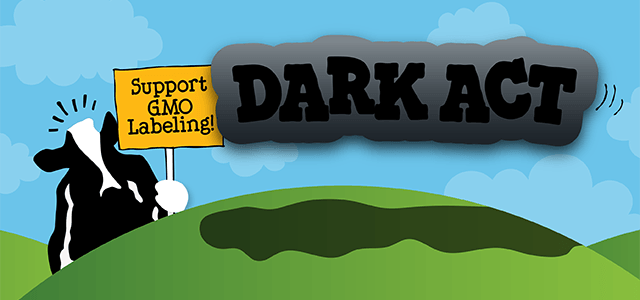 We continued our work as a core member of a coalition including the Environmental Working Group, Just Label It!, and the Center for Food Safety, that is working to defend against state-level preemption by the United States Congress. The group was able to defeat an attempt to pass a bill dubbed by critics the ‘DARK’ Act (because it would Deny Americans the Right to Know). This bill would have prohibited the FDA from requiring a national standard on labeling. The success in keeping the food industry from passing the DARK Act in 2015 is a critical victory in the fight for consumers’ right to know. Our end goal remains the same: we want a national labeling standard, but since it’s pretty clear that Congress won’t act anytime soon, we will continue to support states’ efforts to pass laws like ours in Vermont. Our theory is that once states start getting involved, this will increase the pressure on Congress to pass a national law, which would be simpler for consumers and easier for food producers to comply with. This is an issue we won’t give up on and plan to continue working on the state and national levels and with our partners, because we believe consumers have the right to know what’s in their food.
We continued our work as a core member of a coalition including the Environmental Working Group, Just Label It!, and the Center for Food Safety, that is working to defend against state-level preemption by the United States Congress. The group was able to defeat an attempt to pass a bill dubbed by critics the ‘DARK’ Act (because it would Deny Americans the Right to Know). This bill would have prohibited the FDA from requiring a national standard on labeling. The success in keeping the food industry from passing the DARK Act in 2015 is a critical victory in the fight for consumers’ right to know. Our end goal remains the same: we want a national labeling standard, but since it’s pretty clear that Congress won’t act anytime soon, we will continue to support states’ efforts to pass laws like ours in Vermont. Our theory is that once states start getting involved, this will increase the pressure on Congress to pass a national law, which would be simpler for consumers and easier for food producers to comply with. This is an issue we won’t give up on and plan to continue working on the state and national levels and with our partners, because we believe consumers have the right to know what’s in their food.
Learn more about why we support mandatory GMO labeling, and a consumer's right to know.
The Non-GMO Supply Working Group
In the United States a majority of commodities produced are GMO. In fact, according to USDA, more than 90% of all corn, soy, canola, and sugar beets grown in the U.S. were genetically modified in 2015. We’d like to turn the tide away from the dominance of GMOs to protect consumers’ choice of food ingredients and products.
In 2014 we joined together with Green America’s Center for Sustainability Solutions to create a national Non-GMO Working Group. Made up of dozens of companies and stakeholders in the food industry, our aim is to rebuild a robust non-GMO sector as a pathway to a more diverse, resilient and sustainable food system that creates better long-term outcomes for farmers, consumers, and the environment.
In 2015 our progress with this Working Group included the launch of a multi-stakeholder collaboration which aims to develop a cost-effective ‘non-GMO fed’ dairy supply chain in the Northeast region in the next 5 years. Other efforts we’re supporting include projects to develop the non-GMO feed and seed supply to the Pacific Northwest dairy industry; and a project focused on developing longer (3+ year) rotations of non-GMO large-scale commodity production in the Midwest, which will allow for radical reductions of synthetic fertilizer and pesticide inputs.
Within the Working Group, we are also working to create conditions that will support the long-term growth of non-GMO supply chains. This includes collaborative work to establish industry standards that will encourage small and large scale food producers to go non-GMO; and bringing together stakeholders to invest in infrastructure needed to support a robust non-GMO supply chain.
We are proud of our work with this diverse group and believe that collaborative approaches are necessary to create a more sustainable food system and to create better long-term outcomes for everyone - farmers, consumers, and the environment.
rBGH
Since 1989, Ben & Jerry’s has opposed the use of recombinant bovine growth hormone (rBGH), a genetically engineered hormone given to cows to increase their milk production.*1 We think rBGH is a step in the wrong direction towards a chemically-intensive, high-tech food system that has unacceptable social and environmental costs.
Our milk comes from the St. Albans Cooperative in Vermont, made up of about 400 family farmers; and we have required all of our farmers to pledge not to treat their cows with rBGH. In the Netherlands, where we produce ice cream for the European market, we buy milk from CONO Cheesemakers, made up of about 500 family farmers; rBGH is not even legal in the Netherlands, so it’s one less thing we have to worry about! We also source dairy for smaller production quantities in Henderson, NV and Simcoe, Ontario, Canada, which also come from herds that are not treated with rBGH.
While our products have for decades come from cows not treated with rBGH, we continue to work with a coalition of nonprofit groups and companies in the U.S. to defend the consumer's right to know.
Synthetic Biology
We are aware that some food ingredients may soon be available on the market that are derived from new applications of genetic engineering techniques and approaches sometimes referred to as synthetic biology. We consider the food ingredients produced in this way to be inconsistent with Ben & Jerry’s criteria for sourcing and therefore we will not use them in our products.
*1 The FDA has said no significant difference has been shown & no test can now distinguish between milk from rBGH treated & untreated cows.
Fairtrade
 Fairtrade is a global movement working to ensure that small farmers in developing countries can compete and thrive in the global economy. When you buy Fairtrade certified products, you can be confident that the farmers who grew the Fairtrade ingredients received a fair price for their harvest. In return, Fairtrade farmers agree to use environmentally sound farming practices, implement fair working standards, and invest in their communities. Fairtrade is a great model that’s helping to ensure the global economy is serving people, not the other way around.
Fairtrade is a global movement working to ensure that small farmers in developing countries can compete and thrive in the global economy. When you buy Fairtrade certified products, you can be confident that the farmers who grew the Fairtrade ingredients received a fair price for their harvest. In return, Fairtrade farmers agree to use environmentally sound farming practices, implement fair working standards, and invest in their communities. Fairtrade is a great model that’s helping to ensure the global economy is serving people, not the other way around.
Ben & Jerry’s is committed to sourcing Fairtrade ingredients as a way to improve the livelihoods of small family farmers and the health of our planet.
Fairtrade Highlights for 2015
 In 2015 we kept up efforts to educate consumers about the value of Fairtrade certified products and strengthen the Fairtrade system. Here’s how:
In 2015 we kept up efforts to educate consumers about the value of Fairtrade certified products and strengthen the Fairtrade system. Here’s how:
- We continued to engage with our Fairtrade Producer Development Initiative (PDI) partners and started to build linked prosperity relationships within our supply chain.
- We traveled to Cuba to attend our first meeting of Fairtrade International’s Sugar Advisory Council.
- We continued to be an active member of the Domestic Fair Trade Association.
- We participated in events for World Fair Trade Day, Fairtrade Fortnight in the UK, and Fair Trade Month in the U.S. to spread the word!
Converting Our 5 Key Commodities to Fairtrade-Certified Fair Trade Conversion
Ben & Jerry’s set a goal five years ago to convert to ingredients that are non-GMO sourced and Fairtrade Certified. Our first fully converted pints shipped in April 2014, and by October 2014 all of the ingredients that could be sourced as Fairtrade in our pints were sourced as Fairtrade Certified (and non-GMO by source)*2. One additional note: while the conversion to Fairtrade ingredients was completed in 2014, it wasn’t until the beginning of 2015 that we started to manufacture and distribute Fairtrade-certified products in Canada, due to production schedules, fully completing our conversion objectives.
It was a massive undertaking, considering that we had about 80 flavors, 110 ingredients and more than 200 different products to transition. The effort was worth it and now we can see the benefits of our investment. Fairtrade ensures that all farmers get paid a minimum price to cover the cost of sustainable production, one that never falls below the market price. But there is an additional sum of money paid on top of that minimum price: this is called the Fairtrade social premium. Farmers decide for themselves how to invest these funds to improve their lives and livelihoods, as well as those of their communities.
*2 - Again, this does not mean that every ingredient in our products is sourced from Fairtrade suppliers. There are a few ingredients such as certain fruits, nuts and spices that we are currently unable to source from Fairtrade suppliers. In those cases, Fairtrade International has provided us derogations (approved waivers) to show that despite our efforts to source these products from Fairtrade suppliers, we were unable to, either because they did not meet our quality specifications or they were just not commercially available to us. Our products have earned the Fairtrade seal because they meet and in many cases actually exceed the requirements of the Fairtrade Certification by Fairtrade International.
SUGAR:
GOAL:
Our revised goal was to achieve full conversion to Fairtrade sugar in our base-mix, globally, by end of 2014.
PROGRESS:
- Globally, 99.6% of the sugar used in Ben & Jerry’s base-mix was traded in compliance with Fairtrade standards, up from just over 98% in 2014.
- In North America, over 99.4% of sugar used in our base mix was traded in compliance with Fairtrade standards, up from 97.8% in 2014.*3
- In Europe, 100% of the sugar we added to our base mixes was traded in compliance with Fairtrade standards.
*3 - Following a 2015 year-end review, Ben & Jerry’s discovered a deficiency in the amount of FT sugar required to cover production of Fairtrade products at the plant in Henderson, Nevada.
After bringing this deficiency to the attention of Fairtrade Canada, and implementing a corrective action plan to retroactively true-up the deficient volume of FT sugar, Fairtrade Canada can support a claim that all sugar purchased for Ben & Jerry’s 2015 production at the Henderson plant was traded in compliance with Fairtrade standards.
COCOA POWDER
 For many die-hard Ben & Jerry’s fans, there wouldn’t be much point to eating ice cream at all if it didn’t have chocolate in it somewhere. So it’s no surprise that nearly three-quarters of our flavors have chocolate or cocoa in them, in the form of cocoa powder, chocolate chunks, milk chocolate Peace signs, fudge swirls, and various other gobs, chips, and flakes.
For many die-hard Ben & Jerry’s fans, there wouldn’t be much point to eating ice cream at all if it didn’t have chocolate in it somewhere. So it’s no surprise that nearly three-quarters of our flavors have chocolate or cocoa in them, in the form of cocoa powder, chocolate chunks, milk chocolate Peace signs, fudge swirls, and various other gobs, chips, and flakes.
Taken together, these ingredients use a significant volume of cocoa powder or cocoa butter. By transitioning to cocoa-based ingredients that are traded in compliance with Fairtrade standards, we can have a significant impact on improving the livelihoods of our cocoa farmers.
GOAL:
Our revised goal was to achieve full conversion to Fairtrade cocoa powder in our base-mix, globally, by end of 2014.
PROGRESS:
- Globally, 100% of the cocoa powder we used in our base mixes, was traded in compliance with Fairtrade standards.
VANILLA & COFFEE:
Natural flavorings such as vanilla and coffee extract are an important part of the party inside our pints. While we still have some work to do in our North America Fairtrade vanilla conversion, our European-based ice cream makers have reached the target and are using 100% Fairtrade vanilla. In addition, we are pleased to report that we are well on our way to our goal of 100% Fairtrade coffee in all our products.
GOAL:
Our revised goal was to achieve full conversion to Fairtrade vanilla and coffee in our base-mix, globally, by end of 2014.
 PROGRESS: COFFEE -
PROGRESS: COFFEE -
- In Europe, it’s been a few years since we last manufactured any coffee-based flavors. Therefore, we did not source any coffee extracts for our 2015 European products.
- In North America (and therefore, globally), all of the coffee used in our products has been traded in compliance with Fairtrade standards since 2013.
 PROGRESS: VANILLA -
PROGRESS: VANILLA -
- In Europe, all of the vanilla used in our 2015 base-mixes was traded in compliance with Fairtrade standards.
- In North America, 99.4% of the vanilla used in 2015 was traded in compliance with Fairtrade standards, up from 94.9% in 2014.
- Therefore, globally, 99.5% of the vanilla used in 2015 was traded in compliance with Fairtrade standards.
BANANAS:
GOAL:
Our revised goal was to achieve full conversion to Fairtrade banana puree in our base-mix, globally, by end of 2014.
PROGRESS:
At the end of 2013, we secured reliable sources of Fairtrade bananas. Although the full conversion took us about a year longer than we anticipated, in 2015, Fairtrade certified producers supplied 100% of the banana puree used in our products, globally.
CHUNKS & SWIRLS:
The number of different chunks and swirls in Ben & Jerry’s ice cream literally reaches into the hundreds, from plain walnuts to chocolate-covered waffle cones to peanut butter fudge core.
GOAL:
Our revised goal was to fully convert the five key commodities in our chunks and swirls to Fairtrade-status by the end of 2014.
PROGRESS:
Although we missed our goal, we made some significant progress in 2015.
- Globally, a little over 95% of the chunks and swirls ingredients were sourced Fairtrade, up from about 73% in 2014 and 39% in 2013.
- In North America, the percentage of chunks and swirls in our products that were sourced Fairtrade jumped to nearly 93% - up from about 62% in 2014, and just over 7% in 2013.
- In Europe, 99% of our chunks and swirls ingredients were sourced Fairtrade - up from 96.6% in 2014, and 95% in 2013.
Eggs
CAGE-FREE & FREE-RANGE EGGS
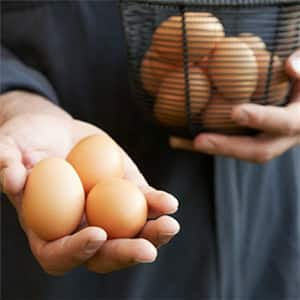 Several years ago, Ben & Jerry’s decided to switch to using Certified Humane® cage-free eggs in our ice cream. The goal of the Certified Humane® program is to improve the lives of farm animals through rigorous standards and by driving consumer demand for kinder and more responsible farm animal practices. We were convinced by the research that cage-free egg systems, combined with rigorous third-party certification, allow hens more opportunity to engage in normal hen behaviors such as roosting, scratching, and flapping their wings.
Several years ago, Ben & Jerry’s decided to switch to using Certified Humane® cage-free eggs in our ice cream. The goal of the Certified Humane® program is to improve the lives of farm animals through rigorous standards and by driving consumer demand for kinder and more responsible farm animal practices. We were convinced by the research that cage-free egg systems, combined with rigorous third-party certification, allow hens more opportunity to engage in normal hen behaviors such as roosting, scratching, and flapping their wings.
As one of the first companies to commit to Certified Humane® cage-free, we were ahead of the market and had to make the change in stages so the cage-free egg industry could catch up with our demand. We also had logistical challenges of our own to solve. We went ‘free-range’ for our European egg supply starting in 2005; and we started the transition to cage-free in the U.S. in 2007.
GOAL:
Our goal is to source 100% Certified Humane® cage-free eggs in North American and free range eggs in Europe.
PROGRESS:
In 2015, we achieved 100% free-range eggs in Europe and nearly reached our goal of 100% cage-free in North America, where 99.7% of the eggs used were from Certified Humane® cage-free hens.
One of the on-going issues in achieving this full conversion was our ice cream novelty bars, which we no longer manufacture as of 2016.
SUGARED EGGS
Beyond the cage-free egg transition, we are also working to make sure that the sugared eggs we buy are sweetened with Fairtrade-certified sugar.
GOAL:
Our revised goal is to source fully Fairtrade-certified sugared eggs by end of 2014.
PROGRESS:
- In 2015, 99.7% of sugared eggs in North America were Fairtrade-compliant sugar, up from 97.9% in 2014 and 56% in 2013.
- In Europe, we achieved our goal in 2012 and since then, 100% of the eggs we use in our ice cream are processed with Fairtrade-compliant sugar.
- On a global basis, therefore, we estimate that in 2015 nearly 99.8% of sugared eggs used in our ice cream base-mix were processed with Fairtrade-compliant sugar, up from 98.7% in 2014 and 73% in 2013.
Supplier Diversity
For a company that has been advocating for social justice and equity for more than 30 years, we have a less than stellar track record of success, when it comes to building a robust supplier diversity program. In 1998, we instituted a supplier diversity program for our non-ingredient purchases. Our program recognized the definition of a diverse supplier as defined by the National Minority Supplier Development Council. Our objective in establishing a supplier diversity program was to seek out and encourage spending with minority owned companies.
Regrettably, in 2004, we suspended our formal supplier diversity program due to what was stated at that time as “redirected priorities, staffing changes and cost savings mandates had made it impossible to continue the program.”
In 2015, as part of our Company-wide effort to better understanding issues of race and equity, we turned to our supply chain and began to think of ways we could work to better support minority owned businesses and to build an effective, enduring and measurable program. We recognize that this is a complex issue and that we need to better understand the challenges and opportunities we face as we work to increase diversity in our supply chain.
Our team has taken the initial steps of engaging internal & external stakeholders, in an effort to define recommendations for creating & implementing a more meaningful & impactful supplier diversity program. We hope to include a more detailed update on our progress in next year’s report!
Equity & Social Justice
We aspire to become a more equitable and inclusive business - and to build a culture that makes diversity the real source of our strength.
In 2015, we set an ambitious goal for ourselves, to learn more about diversity, equity, inclusion and race and class in America, and around the globe. In March, we kicked-off our learning tour in the U.S., by hosting eight leading equity and social justice organizers 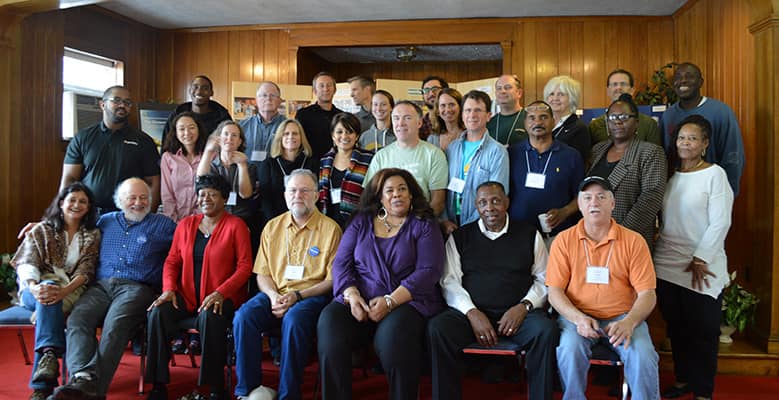 in Vermont and then in December, 25 members of our Ben & Jerry’s team met with leaders of the modern civil rights movement, in Greensboro, North Carolina. We also participated in the Vermont Vision for a Multi-Cultural Future Conference, where we worked with allies to explore issues of race and equity in Vermont.
in Vermont and then in December, 25 members of our Ben & Jerry’s team met with leaders of the modern civil rights movement, in Greensboro, North Carolina. We also participated in the Vermont Vision for a Multi-Cultural Future Conference, where we worked with allies to explore issues of race and equity in Vermont.
Although we are in the early stages of understanding the complex issues of racism and equity, our plan is to take what we are learning and apply that insight to shape internal policies, supply chain practices, national advocacy campaigns and strategies for systemic social change that promote social and economic equity. We have no illusions that we alone will change the world with our actions. But, we are one voice that seeks true equity for all, joining with other voices, and committed to change.
Read more about our social justice and equity work.
Social Mission Activism
Let’s dip into a little Latin, "Qui tacet consentire videtur" (roughly put, "He who is silent consents.") We’ve always lived under the belief that we should stand for something and not be shy about it. So, we tend not to be silent on issues we care about. That leads us to engage in activist campaigns around important issues that are aligned with our Company values and partnerships with organizations that share our values and view of the world. We’ve never been afraid to speak up for social and economic justice, sustainable food, or peace! Here’s a look at where we were active in 2015.
Supporting Young Social Entrepreneurs
JOIN OUR CORE
 For the fourth year running, Ben & Jerry’s partnered with the social entrepreneurship organization Ashoka, to run Join Our Core, an international competition aimed to find and help support the best young social entrepreneurs. Innovative businesses with strong financial sustainability and a positive social and environmental impact are invited to apply for the prize.
For the fourth year running, Ben & Jerry’s partnered with the social entrepreneurship organization Ashoka, to run Join Our Core, an international competition aimed to find and help support the best young social entrepreneurs. Innovative businesses with strong financial sustainability and a positive social and environmental impact are invited to apply for the prize.
Standing for Marriage Equality
Ben & Jerry’s has a long history of commitment to issues of social justice, including gay rights. We’ve supported marriage equality for more than 35 years and, in the late ’80s, we began offering health and insurance benefits to all domestic partners—nixing unjust distinctions between same- and opposite-sex couples. Today, those ideals are integral to our core values that include an unshakable belief that all people deserve full and equal civil rights. We’re in the midst of a global societal shift towards greater acceptance of same sex partners and the status quo is changing quickly. Of the 20 countries that recognize same sex marriage, 10 have done so in just the last four years.
We celebrated the June 26th U.S. Supreme Court ruling for marriage equality, but the reality is that 32 states still lack clear protections for LGBT people. To keep moving the ball forward, Ben & Jerry’s is supporting the Equality Act, a bill written to protect people against discrimination based on their sexual orientation or gender identity. It states that no person can lawfully be denied a job or 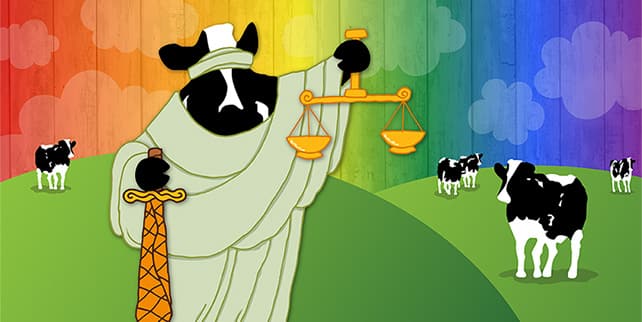 a place to live because of whom they love or how they present themselves to the world. They also can’t be banned from public parks and plazas, refused a loan, barred from school or banned from participating in our judicial system.
a place to live because of whom they love or how they present themselves to the world. They also can’t be banned from public parks and plazas, refused a loan, barred from school or banned from participating in our judicial system.
Until same sex couples are afforded the same rights as heterosexual couples, we will continue to push for full LGBT rights and discrimination protections across the globe.
Here are some highlights of our marriage equality work around the globe, in 2015:
- We joined more than 340 businesses in filing an amicus brief to the Supreme Court that makes the businesses’ case for marriage equality for all.
- Along with so many others around the country and the world, on June 26th we celebrated the Supreme Court's decision providing same-sex couples nationwide the right to tie the knot—now and forever.
- To mark this momentous occasion, Chocolate Chip Cookie Dough was temporarily renamed I Dough, I Dough.
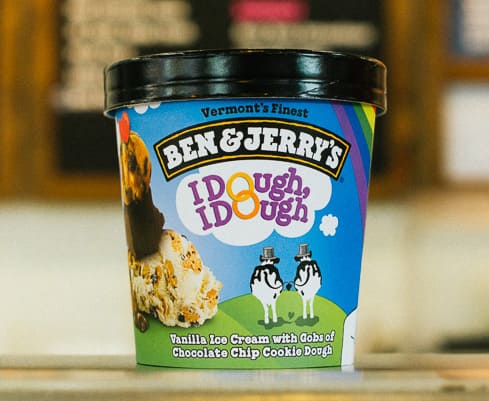
- We sold commemorative I Dough, I Dough pint sleeves and donated proceeds to the Human Rights Campaign (HRC).
- We achieved the highest score on the Human Rights Campaign’s (HRC) 2015 Corporate Equality Index Rating, ranking Ben & Jerry’s among America’s most progressive companies.
- We were active in advocating for marriage equality in Ireland and worked with local celebrities and advocacy organizations to carry-out a nationwide a “YES Equality” campaign, calling on citizens of Ireland to vote Yes on Ireland’s Marriage Equality referendum. Ireland became the 10th country with a majority Catholic population to approve marriage equality— and it came from a popular referendum, meaning the people demanded it.
- In Australia, together with our partner Australian Marriage Equality, we launched Equality Calling - a cutting edge mass voice mail petition, which makes it super easy for anyone to leave a message of support for equality, for local politicians.
Learn more about Ben & Jerry’s position on marriage equality and LGBT rights.
Bob Marley Tribute & Community Empowerment
In the UK, we continued our partnership with Bob Marley’s 1Love Foundation and with Partners for Youth Empowerment (PYE), a community empowerment program in Jamaica. This year we engaged in community empowerment projects in Jamaica and in our key cities in Europe (London, Stockholm, Amsterdam and Hamburg). Royalties from Satisfy My Bowl, continued to helped fund the One Love Youth Camp.
Advocating for the Great Barrier Reef in Australia
In Australia, the fight for the Great Barrier Reef (GBR) continued to be a key campaign in 2015. 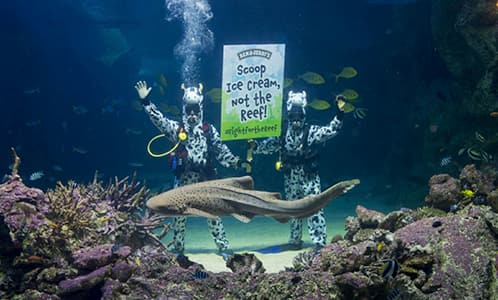 We continued our Open Air Cinema partnership with WWF Australia. Throughout the cinema season, we engaged fans around the Reef and its protection, reaching more than 150K Open Air Cinema goers.
We continued our Open Air Cinema partnership with WWF Australia. Throughout the cinema season, we engaged fans around the Reef and its protection, reaching more than 150K Open Air Cinema goers.
In 2014, we launched the Fight for the Reef Scoop Tour. In partnership with the World Wildlife Fund Australia, our goal was simple. We wanted to give out free Ben & Jerry’s, raise awareness about the dangers facing the GBR and encourage Australians to join the fight to save their landmark. In January 2015, the Australian government took a huge step in protecting the GBR by banning the dumping of dredge spoil in the GBR Marine Park. UNESCO applauded the reversal and just recently announced that the GBR will not be placed on an “in danger” list.
Read more about our continuing work to save the Great Barrier Reef – and how you can, too!
Public Space in Brazil
We opened our first scoop shop in Brazil in 2014, Sao Paulo, specifically. We launched with all three parts of our Mission in action. On the Social Mission side, in 2015 we continued to support efforts to improve urban spaces in Sao Paulo, specifically, we’ve been active in advocating for the transitioning the Minhocao, an elevated highway running through Sao Paulo, into a “high line” style park for pedestrians & cyclists. We’ve also continued to work with Minha Sampa, an organization that allows young people to create change in their local city life.
Supporting a Fair and Just Political System
Get the Dough Out
Ben & Jerry’s has been advocating for democracy and justice since the first cone was scooped in 1978. Over the years we have taken an activist stand and provided support to citizens’ efforts to rein in corporate money in politics, we pay a livable wage to our employees, we directly support family and smallholder farms and we are working to source Fairtrade-certified ingredients for all our products.
 Inspired by the Occupy movement, in 2012 we launched the Get the Dough Out of Politics campaign to increase awareness of the need for fundamental reforms that will reduce or eliminate undue corporate influence in the democratic process and to encourage citizens to take a stand.
Inspired by the Occupy movement, in 2012 we launched the Get the Dough Out of Politics campaign to increase awareness of the need for fundamental reforms that will reduce or eliminate undue corporate influence in the democratic process and to encourage citizens to take a stand.
A few months before the 2014 election, as Congress prepared to vote on creating a 28th Amendment to the Constitution to get big money out of politics, by overturning Citizens United, we got active. With our partners at Public Citizen and Free Speech for People, we launched a campaign to educate and inspire citizens to contact their Senators and tell them that it’s time to get the dough out of politics!
Citizens United has yet to be overturned, but we are hopeful, as dozens of grass-roots groups that have been working on this issues are converging into a true movement. Sixteen states and Washington D.C., along with some 677 cities and towns, have formally called for a constitutional amendment to overturn Citizens United, and more than 5 million Americans have signed their name to petitions to overturn Citizens United.
A 21ST CENTURY DEMOCRACY - VOTING RIGHTS
We believe in a participatory democracy that puts the voice of the people above the interests of the wealthy; That’s why we did not hesitate to sign on to the Principles for a 21st Century- a guiding  document that we believe is a turning point in the push to renew American democracy. It lays out the framework for an open and honest electoral system where everyone participates, and everyone’s voice is heard.
document that we believe is a turning point in the push to renew American democracy. It lays out the framework for an open and honest electoral system where everyone participates, and everyone’s voice is heard.
Democracy belongs to the people and a vital and fair democracy is the fastest way to produce laws that lead to social justice, economic prosperity and environmental health. We remain firm in our position to keep corporate money out of our elections and are proud to support those leading the effort. We plan to campaign vigorously in 2016 to get money out and people in to put the power of democracy back in the people’s hands.
Scoop Shop Social Action
Ben & Jerry’s began as a single ice cream scoop shop in 1978, and though our business has expanded wildly since then, our roots are still firmly planted as a scoop shop company. Most are owned and operated by independent franchisees, although Ben & Jerry’s also operates three company-owned stores. A couple of our scoop shops are what we call a PartnerShop®.
In many ways, our scoop shops are the centerpiece of our Social Mission, because they are the places where we directly touch local communities. Every year, they contribute hundreds of thousands of dollars in time, ice cream, and sponsorships in support of community projects of all sizes and shapes, from Green-Up Days to Food Drives to Hunger Walks.
2015 Global Franchisee Meeting Community Service Project
Once a year, the franchise community gets together for our largest company supported community service project in conjunction with their franchise community meeting. This year, together with Fundacion Palace, a Mexican-based charitable foundation, 155 franchisees, vendors and employees took action in Cancun, Mexico, to spruce up Escuela Primaria, Leona Vicaro. Typically, about twice as many volunteers turn-out for a project like this, but rain caused us to eliminate weather dependent jobs and we were forced to cut 100 volunteers from the project. Nevertheless, we had a blast and were able to make some significant improvements to the school.
Measuring Social Impact Among Franchisees
Every year we strive to find more effective methodologies to measure the Social Mission engagement of our franchisees, as well as the support we provide for their Social Mission activities. Currently, we take into consideration a variety of scores relating to financial performance, the franchisor-franchisee relationship, and Social Mission activities. Most of this data is proprietary or, because it relates to our business relationships with franchisees, is too sensitive to report publicly. Additionally, we are only able to measure Social Mission engagement in our U.S. scoop shops.
Here’s what we can tell you. In general terms, during 2015 we experienced improvements in 2 of the 4 areas of scoop shop financial performance, relative to 2014.
With respect to the 2015 franchisor-franchisee relationship, we saw improvements in 1 of the 3 areas of measure, relative to 2014.
In the 6 areas in which we track Social Mission engagement, here’s where we finished vs. 2014:
- 1 out of 6 measures improved
- 4 out of 6 measures declined
- 1 area remained flat
The Core Academy
Ben & Jerry’s has always believed in Linked Prosperity - that all stakeholders connected to the business should prosper as it prospers, from those who produce the ingredients, to employees who make the product, to the communities in which the Company operates.
This year, through our newly launched Core Academy, we brought our concept of Linked Prosperity to our scoop shops, more specifically, to the employees (AKA scoopers), who make our scoop shops run. In partnership with Champlain College, in Burlington Vermont, and The Story of Stuff Project, we developed an online program designed to help scoopers cultivate their own passions and develop skills that will help them prepare for next steps in their careers and life. Plans are in the works to develop additional courses and to expand the program to more locations. Ideally, we’d like to bring the Core Academy to our scoop shops around the globe and to invite other companies to join up. We think The Core Academy has the potential to bring opportunity to young retail and food service workers around the globe.
Employee Community Service Projects
Each year, Community Action Teams at each of our sites in Vermont organize - to fix, clean, build, and refresh things that improve the quality of life for our communities:
St. Albans Site project: Teams from our manufacturing site in St Albans participated in multiple community volunteer projects in 2015. 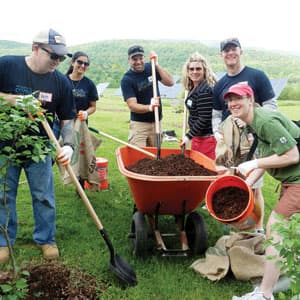 Some of these volunteer activities included: completing yard work, painting, cleaning, and other preparatory activities at Camp Abanaki, Camp Hochelaga & Camp Ta-Kum-Ta; in addition to a variety of community-based in the St. Albans, Vermont area.
Some of these volunteer activities included: completing yard work, painting, cleaning, and other preparatory activities at Camp Abanaki, Camp Hochelaga & Camp Ta-Kum-Ta; in addition to a variety of community-based in the St. Albans, Vermont area.
Waterbury Site project: In 2015, the Waterbury CAT team gathered together for a day of service at Little River State Park in Waterbury, Vermont. The team spent a day raking leaves, removing trash & debris, and moving picnic tables to storage.
Central Support Site project: In 2015, employees from the Central Support team completed two separate CAT projects - spending a day at Camp Ta Kum Ta, and a day at Camp Hochelaga. The Central employees spent the days cleaning cabins, landscaping, and picking up the grounds, in preparation of campers.
Nonprofit Partnerships
We are honored to have the opportunity to partner with some truly amazing nonprofit organizations, all around the globe. We support these partners in a variety of ways including product and cash donations, royalties from flavors, volunteer hours, purchasing their products, investing in their enterprises and collaborating to move social issues we care about forward. While we hope their affiliation with us offers our partners some real benefit, our connections to these NGOs keep us true to our core and inspire us every day.
Starting with our perennial and primary partnership with the Ben & Jerry’s Foundation, here are a few of the organizations we partnered with in 2015:
The Ben & Jerry’s Foundation
Part of Ben & Jerry’s commitment to social and economic justice is our support of the Ben & Jerry’s Foundation. The Ben & Jerry’s Foundation makes grants to grassroots organizations who are working towards making systemic positive change in their own communities. Through the Foundation, we are supporting groups that are promoting social justice, protecting the environment and supporting sustainable food systems.
The Foundation administers several grant making programs in Vermont and nationally. These include the Grassroots Organizing for Social Change grant program, the Vermont Economic Justice grant program, the Vermont Capacity-building grant program, and the Vermont Community Action Team grant program. The funding decisions for these programs are made by teams of Ben & Jerry’s employees. In addition, the Foundation administers a company-wide Employee Matching Gift Program.
Below are some highlights of Foundation grant making in 2015:
- The Ben & Jerry’s Foundation made grants totaling $2,479,590.
- Ben & Jerry’s contributed $2,870,505 to the Ben & Jerry’s Foundation, an increase from $2,613,582 in the previous year.
- Forty-six Ben & Jerry’s employees served on a Foundation grant-making committee.
- Employee Community Action Teams at our Vermont manufacturing plants and central support offices, made grants totaling $226,440 to organizations supporting underserved populations including seniors, at-risk youth, and low-income people.
- Sixteen percent of the Company’s employees participated in the Foundation’s Matching Gift Program by making 188 contributions totaling $34,200.
To learn more about the Ben & Jerry’s Foundation and the organizations they support, visit their website or view their Annual Report.
Social Justice Partners
Ashoka is a global organization that identifies and invests in leading social entrepreneurs -- individuals with innovative and practical ideas for solving social problems. For the past four years, we’ve been proud to partner with Ashoka , our lead partner for Join Our Core.
Mission Australia works with our team in Australia to help provide jobs and job training in our scoop shops, for young people who may face barriers to employment. We’ve been partnering with Mission Australia since our first scoop shop opened down under, in Sydney in 2009.
DREAM, is a nonprofit mentoring organization that matches college mentors with young people growing up in subsidized housing projects. Within our South Burlington office, DREAM staff have access to shared resources in the building, including the employee kitchen, meeting rooms, and photocopiers. We’re glad to be able to support its innovative and important work.
Climate Justice Partners
Avaaz is the world’s leading online activist network and our lead partner in our climate justice work. Powered by 40 million members in 194 countries, Avaaz gives global citizens the ability to speak up and influence public debate and policy.
Business for Innovative Climate and Energy Policy (BICEP) is an advocacy coalition of businesses committed to working with policy makers to pass meaningful energy and climate legislation. We’ve been an active member of BICEP since 2009.
The Climate Reality Project, founded by Vice President Al Gore is a diverse group of more than a million individuals, business leaders, scientists, cultural leaders, marketers and more who are committed to creating a healthier, sustainable, and prosperous future by shifting from fossil fuels to clean, renewable energies like solar and wind. We’ve learned so much from our friends at the Climate Reality Project and we look forward to continuing our work with this seasoned and effective advocacy organization into the future.
Democracy and Equity Partner
Business For Democracy is a collaborative effort of companies and business leaders in support of government by the people - and opposed to the Citizens United decision. Ben & Jerry’s Get the Dough Out campaign is part of the Business for Democracy coalition which supports Free Speech for People’s call for a constitutional amendment to repeal the Citizens United Supreme Court decision.
LGBT / Marriage Equality Partner
The Human Rights Campaign (HRC) is America's largest civil rights organization working to achieve lesbian, gay, bisexual and transgender equality. HRC is our lead partner in our work on marriage equality and LGBT equality issues around the globe.
Fairtrade Partner
Fairtrade International is a global organization working to secure a better deal for farmers and workers. We’ve been partnering with Fairtrade International for more than a dozen years, and in 2015 we were thrilled to kick-off our collaborative work on the Producer Development Initiative.
Non-GMO Partners
Just Label It! is a national coalition of groups calling on the FDA to require labeling of our food.
Food Democracy Now! is a grassroots movement of more than 650,000 farmers and citizens dedicated to building a sustainable food system that protects our natural environment, sustains farmers and nourishes families.
These organization have played a critical role in our GMO labeling advocacy efforts.
PartnerShop Partnerships
PartnerShops are Ben & Jerry’s Scoop Shops that are independently owned and operated by community-based nonprofit organizations. Ben & Jerry’s waives the standard franchise fees and provides additional support to help nonprofits operate strong businesses. PartnerShops offer job and entrepreneurial training to youth and young adults that may face barriers to employment. Ultimately, they help people build better lives.
Currently, our business supports two PartnerShops:
Pittsburgh, PA: The Ben & Jerry’s PartnerShop is owned and operated by Life’sWork of Western PA.
Portland, OR: The Ben & Jerry’s PartnerShop is owned and operated by New Avenues for Youth.
Learn more about the nonprofits that operate our PartnerShops.
Flavors with a Cause
Every day around the globe, in scoop shops, shopping centers, and grocery stores, a percentage of sales of certain Ben & Jerry’s products are directed to nonprofit charitable organizations, including Fairtrade organizations. These products include the following:
- All Fairtrade-certified flavors sold in Europe and Fairtrade-certified flavors sold in the U.S. contribute licensing fees that support the work of Fairtrade labeling organizations and around the world – in addition to Fairtrade premiums paid to farmers or farmer cooperatives for the ingredients they grow for us.
- Phish Food Greek Yogurt - Royalty proceeds from this flavor are paid to the Waterwheel Foundation’s Lake Champlain Initiative, which protects the health of this beautiful lake on Vermont’s western border, and its surrounding watershed.
- Stephen Colbert’s Americone Dream™ (US) – Royalties are paid to the Stephen Colbert Americone Dream Fund to benefit children, veterans, and the environment.
- Phish Food® (global) – Some of the royalties from this flavor are paid to the Waterwheel Foundation’s Lake Champlain Initiative, which protects the health of this beautiful lake on Vermont’s western border, and its surrounding watershed.
- Stephen Colbert’s Americone Dream™ (US) – Royalties are paid to the Stephen Colbert Americone Dream Fund to benefit children, veterans, and the environment.
- Satisfy My Bowl (Europe) – Royalties are paid to the 1Love Foundation. The Bob Marley family foundation to support youth empowerment programs.
- Tonight Dough – Royalties from this flavor are donated to SeriousFun Children’s Network, a nonprofit organization that helps children with serious illness and their families by providing life changing experiences at camp.
- Salted Caramel Brow-nie Ale – Each pint sold benefits Protect Our Winters (POW), a group that is engaging the snow sports community to fight climate change.
B Corp Certification
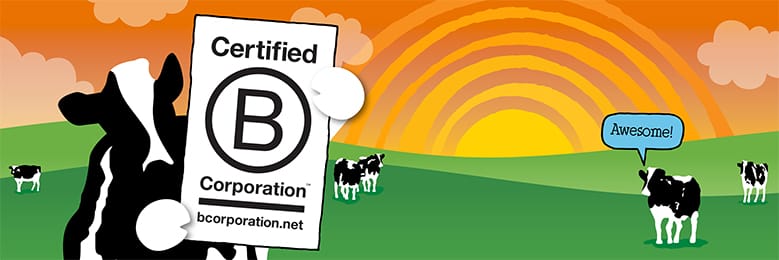 Benefit Corporations, commonly known as B Corps, are a new type of corporation that uses the power of business to solve social and environmental problems. B Corps must satisfy a rigorous assessment by the non-profit B Lab that covers: corporate governance, worker benefits, community engagement and environmental performance.
Benefit Corporations, commonly known as B Corps, are a new type of corporation that uses the power of business to solve social and environmental problems. B Corps must satisfy a rigorous assessment by the non-profit B Lab that covers: corporate governance, worker benefits, community engagement and environmental performance.
In October 2012, a quarter-century after pioneering the socially responsible business movement, Ben & Jerry’s became the first wholly-owned subsidiary in the world, with full support from our parent company, Unilever, to gain B Corp Certification. We completed a reassessment in 2014 and raised our score from 89 to 101 points.
We think B Corp Certification is the next chapter for socially responsible businesses and we are proud to be an active player in the B Corp movement and look forward to participating in the reassessment process again in 2016.
Learn more about Ben & Jerry’s joining the B Corp movement.
Learn more about B Corporations and view Ben & Jerry’s Impact Assessment.
Employee Wellbeing & Culture
Livable Wage
Ben & Jerry’s is committed to paying all of its workers a livable wage, and our Livable Wage policy covers all full and part-time employees in our Vermont manufacturing plants and in all of our company-owned scoop shops. In 1995, we established a method for calculating a livable wage benchmark for Vermont. We defined it as the starting wage for a single person that will sustain a reasonable quality of life to include expenditures for housing, utilities, out-of-pocket health care, transportation, food, recreation, savings, taxes, and miscellaneous expenses. Since then, we’ve adjusted this livable wage annually to ensure the relative value is sustained in today’s marketplace.
Our hourly wage, $16.92 translates to $35,193 per year. For comparison, at year-end 2015, the minimum wage in Vermont was $9.15/hr ($19,032/yr) and the national minimum wage was $7.25/hr ($15,080/yr). On January 1, 2016, the Vermont minimum wage is scheduled to increase to $9.60/hr ($19,968/yr). Meanwhile, the national minimum wage has stayed the same since 2009. Over the years, our minimum wage has continued to increase at a rate faster than the national and Vermont minimum wage.
Globally, we have reviewed how our livable wage stands up for the primary employees who make Ben & Jerry’s at manufacturing sites in Henderson, NV; Sikeston, MO; Simcoe, Ontario; and Hellendoorn, in the Netherlands. We believe, based upon local standards, that our livable wage is met at those sites. Because this is an extensive process to complete globally, we focus yearly reviews on the US.
Tracking Ben & Jerry’s Livable Wage (Vermont)
- 2015 - $16.92
- 2014 - $16.29
- 2013 - $16.13
- 2012 - $15.97
- 2011 - $15.34
- 2010 - $14.64
About 127 employees reported in to the Central offices in South Burlington, Vermont.
Over 350 employees reported in to the two manufacturing sites in Vermont (Waterbury and St. Albans)
Diversity in Our Workforce
We aspire to become a more equitable and inclusive business - and to build a culture that makes diversity the real source of our strength.
Ben & Jerry’s is an equal opportunity employer that values diversity in our workforce. One element of this commitment is our application of Affirmative Action practices to look for conspicuous imbalances in our workforce and take positive steps to correct them. Affirmative Action plans focus on equality in hiring, training, promoting, and compensating employees.
Ben & Jerry’s Vermont Manufacturing sites pride themselves on their overall diversity; diversity based on age, gender, tenure, sexual orientation, veteran status, parental status, situation of life, race, and many other factors. The one area we struggle with is racial diversity, which is primarily driven by the low levels of availability of this demographic in our recruiting regions.
In 2014, in an effort to achieve a wider pool of candidates throughout the company, we began working with recruiters and non-profit organizations serving underrepresented populations in Vermont. In 2015, we continued our efforts to recruit a diverse workforce and we continue to post all of the positions we hire for on websites which have been identified as diversity recruiting sites. Additionally, we also continued to work with the Unilever recruitment team and the Vermont Partnership for Fairness and Diversity to explore ways to increase the racial diversity and understand racial biases in our workforce.
While we are performing better than benchmark when compared to national averages in racial diversity and female representation, we know we still have work to do. Although we did not get as far as we had hope, in 2015 we started to lay the groundwork for updated internal policies and practices that we believe will contribute to a more diverse and equitable work culture.
Volunteer Benefit
Each year, through a variety of Company sponsored volunteer hours, we encourage our employees to get out into the real world and give back. That can come in the form of 40 paid volunteer hours that many of our employees can use, or group projects that are organized by Ben & Jerry’s worksites or at various Company gatherings throughout the year. Overall, adding up group community projects and individual volunteer time, we estimate that employees logged about 4, 613 hours of paid volunteer time globally in 2015, which was up from the 4,492 hours in 2013. But the truth is that we don’t do a great job capturing all of the volunteer hours and community projects that Ben & Jerry’s people are logging around the world. So, we know that we need to do a better job of capturing and reporting that.
Climate Justice & Environment

Supporting Stronger Climate Policy
Now more than ever, it's important that policy makers at all levels, around the globe understand the urgency and the impact of climate change and we think it’s our job to urge them to take action. We’re compelled to act on this issue on behalf of the worlds' most vulnerable citizens who will pay the highest price for a problem they didn’t create. It’s about, among others, our smallholder Fairtrade suppliers in the global south that risk having their livelihood wiped out by a warming world and changing weather patterns.
To achieve real systemic social change, our climate justice strategy has three pillars:
- Our Low Carbon Linked Prosperity Business Model
- Our progressive policy agenda
- Our public facing activism campaign
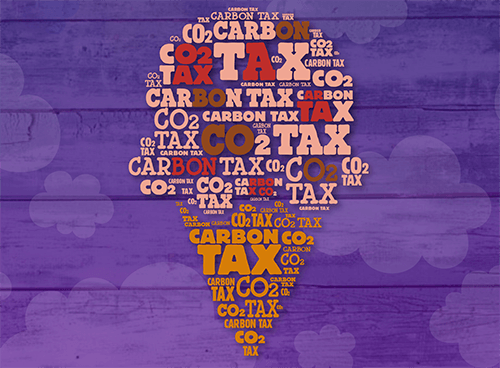 To keep the rise of the global average temperature below 2 degrees Celsius, Ben & Jerry’s supports the following policies:
To keep the rise of the global average temperature below 2 degrees Celsius, Ben & Jerry’s supports the following policies:
- Ensure that two-thirds of all currently commercially viable fossil fuel reserves remain in the ground.
- Completely phase out all fossil fuel emissions as soon as possible, but no later than 2050.
- Make no new investments in fossil fuel infrastructure.
- Engage all countries in phasing out fossil fuel emissions, with actions varying depending on countries’ common but differentiated responsibilities and respective capabilities.
- Transition the global economy to 100% renewable energy while ensuring sustainable energy access for all by 2050.
- Put a science-based price on carbon pollution that limits warming to 2 degrees Celsius.
- Create a global framework in which developed economies help fund the shift towards low-emission and climate-resilient sustainable development in developing countries and the global south.
Climate Justice - Save Our Swirled
In what was likely the largest ever coordinated action on a Ben & Jerry’s campaign, in 2015, our teams around the globe, came together around Save Our Swirled, Ben & Jerry’s Climate Justice Campaign. 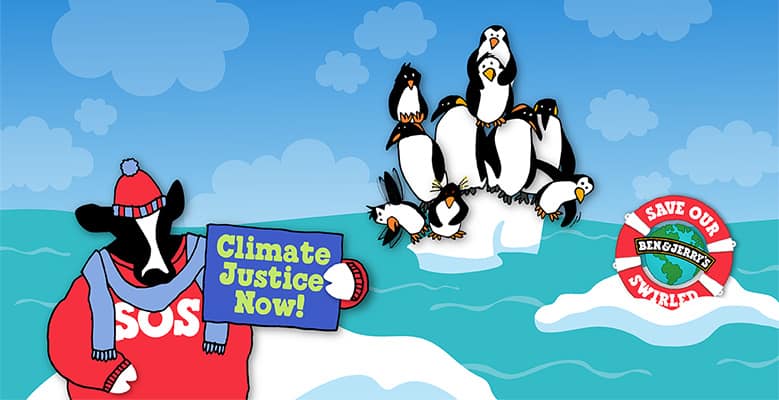 We hit the streets and activated educational and advocacy campaigns that turned out fans in Ottawa, Melbourne, Sydney, Tokyo, São Paulo, Athens, Berlin, Amsterdam, Copenhagen, Auckland, and Zurich to participate in the Global Climate March on November 29th. Our teams joined more than 750,000 people in more than 150 countries around the world who took to the streets on the eve of COP 21 to demand action from their leaders.
We hit the streets and activated educational and advocacy campaigns that turned out fans in Ottawa, Melbourne, Sydney, Tokyo, São Paulo, Athens, Berlin, Amsterdam, Copenhagen, Auckland, and Zurich to participate in the Global Climate March on November 29th. Our teams joined more than 750,000 people in more than 150 countries around the world who took to the streets on the eve of COP 21 to demand action from their leaders.
Through our advocacy work, we helped to gather support from more than 300,000 citizens all around the world, urging world leaders to tackle climate change at the  United Nations Climate Summit (COP21), which happened in Paris in early December. In the end, our partner, Avaaz, delivered over 3.5 million petitions for 100% clean energy by 2050 to leaders on the eve of this critical negotiation, and we won! A landmark agreement was signed in Paris by 190 countries with the goal of holding planetary warming to under 1.5 degrees Celsius. This is the first major step in a critical journey towards a healthier climate future.
United Nations Climate Summit (COP21), which happened in Paris in early December. In the end, our partner, Avaaz, delivered over 3.5 million petitions for 100% clean energy by 2050 to leaders on the eve of this critical negotiation, and we won! A landmark agreement was signed in Paris by 190 countries with the goal of holding planetary warming to under 1.5 degrees Celsius. This is the first major step in a critical journey towards a healthier climate future.
Here are some highlights of our climate justice advocacy work and activism in 2015:
- We created the limited batch Save Our Swirled flavor to bring attention to global warming. A portion of proceeds from the sale of this flavor were donated to support Global Climate March actions.
- We were thrilled to be hosted by Tesla Motors, the innovative and progressive electric car manufacturer, for the official launch of the Save Our Swirled flavor.
- With our partners at Avaaz, we encouraged our fans in more than 35 nations around the world to take action and ensure that the United Nations climate talks in Paris ended in success, with a plan for real and urgent action on climate change.

- We marched with over 785,000 people in 2,300 Global Climate March actions and events across 175 countries.
- Ben & Jerry’s signed on to support the White House American Business Act on Climate Pledge joining forces with more than 150 major companies who have pledged to support U.S. plans to reduce emission, and invest in clean energy, while developing plans to reduce the environmental footprint of their companies.
- We joined 16,000 other companies in signing onto the Ceres BICEP climate declaration, a business coalition dedicated to pushing for long-term solutions to global warming in the U.S.
- We were active in the Energy Independent Vermont campaign in support of a state-wide carbon tax.
- We partnered up with Al Gore’s Climate Reality Project to support a national day of action on climate change across dozens of college campuses around the country.
- In the United Kingdom, we worked with the Campaign Against Climate Change, Oxfam, and a broad of coalition of climate and student groups that organized a national lobby day at Westminster.
- In Germany we worked with Greenpeace and others to oppose the export of coal and electricity from coal fired power plants.
- In Australia we worked with the World Wildlife Fund, the Australian Youth Climate Coalition, and the Climate Reality Project.
- We were the only corporation invited to be a sponsor of The Pathway to Paris Concert that took place at COP21.
Carbon Reduction, Insetting & Offsets
When it comes to the issue of climate justice and the environment, we know that our business is at the center of some of the most pressing climate issues of our time. We are a frozen product made from agricultural ingredients. We make it, freeze it and ship it.  So, we know we have to work harder to mitigate our impact on the environment.
So, we know we have to work harder to mitigate our impact on the environment.
In 2015 we completed an updated Life Cycle Analysis (LCA) of our products that revealed the carbon emissions at each stage of our ice cream’s “life cycle”—from the farm to the end of life of the pint container. What we learned is that 41% of Ben & Jerry’s total carbon footprint is traceable back to the cows that create the common ingredient in every Ben & Jerry’s flavor— cream. We also discovered that each pint we make adds up to two pounds of CO2 emissions to the atmosphere. We’ve used the results of the LCA to create a clear road map towards reducing the carbon footprint of our Company, pint for pint.
Scientists agree that we need to curb emissions by at least 80% by mid-century to avoid completely overheating our planet. We’ve set our own targets for reducing emissions based on the same science. Among other things, our carbon reduction plan includes the installation of a 500kwh solar array at our Waterbury manufacturing plant. The panels will provide approximately 15% of the site’s annual energy requirements.
Additionally, in 2015, we instituted a self-imposed price on carbon of $10 for every metric ton of our greenhouse gas emissions on our operations in the U.S., from farm to landfill. In the Netherlands, Ben & Jerry’s has imposed a price on carbon of €10 per metric ton since 2007. We’ll be directing these revenues into a fund to jumpstart carbon reduction programs, starting on farms where we are already working.
Reducing Carbon Emissions on Farms
We know that just over 40% of Ben & Jerry’s total carbon footprint is traceable back to the cows, that’s why we are pursuing projects such as a manure separator project with Vermont-based NativeEnergy to reduce methane emissions on Caring Dairy™ farms. The manure separation equipment and a drum composter processes cow manure into a sanitary bedding material in place of increasingly costly sawdust. The project is designed to do the following:
- Reduce greenhouse gas emissions by removing a portion of the manure solids that are traditionally held in the farm’s manure lagoon where they break down and produce methane gas
- Decrease potential run-off pollution, primarily phosphorus, by reducing the volume of waste material that needs to be spread on nearby fields
- Strengthen the long-term financial sustainability of the farm by reducing costs associated with bedding, hauling and spreading waste material
Ben & Jerry’s plant in Europe, based in the Netherlands, saw its biodigester “AKA the Chunkinator”, become fully operational in 2014. This great piece of sustainability can convert any ice cream waste from the plant, 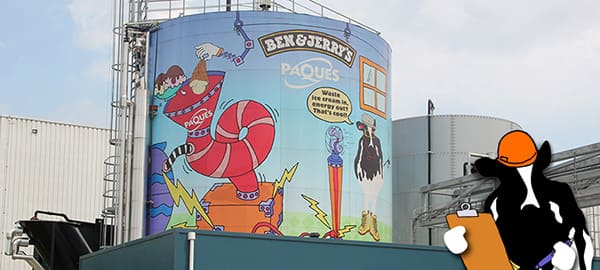 as well as all the cleaning water, into energy with the help of millions of tiny bacteria that work to break down the energy in the waste. The Chunkinator, as it is lovingly known to the team at Hellendoorn, has the ability to produce all the heat requirements for the plant; roughly 20% of the energy needs. All from chunks of cookie dough! The project is part of a wider scheme in Hellendoorn, which employs a number of sustainability initiatives that seek to reduce and reuse the energy that the plant uses in order to make great tasting ice cream in the nicest possible way.
as well as all the cleaning water, into energy with the help of millions of tiny bacteria that work to break down the energy in the waste. The Chunkinator, as it is lovingly known to the team at Hellendoorn, has the ability to produce all the heat requirements for the plant; roughly 20% of the energy needs. All from chunks of cookie dough! The project is part of a wider scheme in Hellendoorn, which employs a number of sustainability initiatives that seek to reduce and reuse the energy that the plant uses in order to make great tasting ice cream in the nicest possible way.
Manufacturing
Ben & Jerry’s ice cream for the North American market is made in our manufacturing plants in Waterbury and St. Albans, Vermont and in a Unilever facility in Henderson, Nevada. We make Ben & Jerry’s ice cream for the European market in a Unilever facility in Hellendoorn, The Netherlands and for the Canadian market in a Unilever facility in Simcoe, Ontario. We make ice cream for Asian markets in our Vermont manufacturing plants. Our frozen novelties are manufactured at a Unilever facility in Sikeston, Missouri. We recognize the impact that our manufacturing process has on the environment and work at all levels to reduce our environmental impact.
We are measuring Ben & Jerry’s environmental impact for the purposes of our QoR metric by looking at four performance parameters at every plant that makes Ben & Jerry’s ice cream products - water, solid waste, energy and CO2 emissions. Using a formula that weights each plant’s performance by the volume of Ben & Jerry’s products it produces, we calculated the following outcomes in 2015: (weighted global results - normalized performance – per gallon of product).
2015 Environmental Numbers
- Water Use: 18% better than 2014 (cubic meters per unit of production)
- Energy Use: 11% better than 2014 (gigajoules per unit of production)
- CO2 Emissions: 22% worse than 2014 (kg per unit of production)
- Solid Waste: All of our manufacturing sites were zero-waste to landfill in 2015
Ben & Jerry’s plant in Europe, based in the Netherlands, saw its biodigester “AKA the Chunkinator”, become fully operational in 2014. This great piece of sustainability can convert any ice cream waste from the plant, as well as all the cleaning water, into energy with the help of millions of tiny bacteria that work to break down the energy in the waste. The Chunkinator, as it is lovingly known to the team at Hellendoorn, has the ability to produce all the heat requirements for the plant; roughly 10-14% of the energy needs. All from chunks of cookie dough! The project is part of a wider scheme in Hellendoorn, which employs a number of sustainability initiatives that seek to reduce and reuse the energy that the plant uses in order to make great tasting ice cream in the nicest possible way.
Packaging
For years, Ben & Jerry’s has been working to reduce the negative environmental impacts of our packaging materials. It has always been a challenge, given that our packaging must meet strict requirements for food packaging and also has to stand up to temperatures of 20 degrees below zero (F).
Pint Cartons and Novelty Boxes
Today, all of our global paperboard packaging has Forest Stewardship Council (FSC) Certification. In 2015, we transitioned the remaining small percentage of packaging for our quart containers to FSC. FSC certification means that the pulp in the paperboard comes from forests that are managed for the protection of wildlife habitat, maintenance of biodiversity, and other forest sustainability criteria. We continue to follow packaging industry developments into food-safe coatings made from renewable materials, an important next step towards development of packaging that's biodegradable and fully compostable.
While our pint containers are not allowed to contain post-consumer recycled material because of food contact regulations, we are using 100% recycled paperboard in the boxes that we use for Ben & Jerry’s bars in the U.S.
Scoop Shops
On an ongoing basis, we are working to improve the materials used in Ben & Jerry’s scoop shops, such as bowls, spoons, drink cups, and napkins. For example, in the U.S., we have used unbleached paper in our napkins for many years and our drink cups, while made of plastic, are recyclable and have been light-weighted to use as little material as possible.
Corporate Office Materials
In our corporate office, we have made significant strides in using environmentally friendly materials, including 100% post-consumer recycled and process chlorine-free paper; compostable dinnerware, green cleaning solutions, low-VOC paints, and flooring that is recyclable.
Note: We have not yet developed metrics that track our progress towards improving the environmental attributes of our secondary packaging, scoop shop packaging or our office materials. We will keep working on it!
Green Teams
Historically, each of our three Vermont-based Company sites has had a Green Team, comprised of employees interested in environmental issues. These employee-led teams come up with projects, activities, and events that highlight relevant environmental issues within the Company and beyond.
In our St. Albans and Waterbury manufacturing sites, employees continued with many of the same wonderful internal and external activities, established by the Ben & Jerry’s Green Teams in previous years. Some of these 2015 activities included the following:
- Employees from both sites participated in Vermont Green-Up Day
- In celebration of Arbor Day, Blue Spruce trees were given to all employees.
- The lunchroom food waste from both sites was turned into compost and each site received 20 yards of compost, which employees were given for their home gardens.
- Local organic vegetable seeds were given to all employees to promote local food and “grow a row” for a neighbor.
- St. Albans continued with the onsite Community garden. 100% of the garden harvest was given to the local food shelter.
- Waterbury created a community garden team. The team established new raised beds at the plant and all of the harvest was donated to the local food bank.
- Both sites continue to be zero landfill.
- In collaboration with Efficiency Vermont and the Vermont Energy Investment Corporation, the plants were able to continue to reduce the energy and water used in the manufacturing process. In St Albans, the kilowatt per gallon of product was reduced by 11% and water per gallon of product was reduced by 19%. In Waterbury, the kilowatt per gallon of product was reduced by 24% and water per gallon of product was reduced by 21.6%
Although the Green Team in our Central Support offices was resurrected in 2014, the group failed to gain traction and did not host any events in 2015.
Review Report of Independent Accountants
Independent Auditor's Report
For our 2015 report, we engaged Moss Adams LLP, an independent accounting firm, to review specific Quality of Results indicators that Ben & Jerry’s set as priorities for the year.
